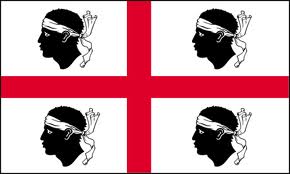"Are we there yet?" No.
But in a way, yes we are. For when you travel overland,
as we do, the getting there and the getting back are all part of the
experience. 'Slow travel' is about opening the eyes and the mind to each new
scene as it unfolds, to each new encounter and to each new moment. It's not
just a mode of travelling from place to place but also a mindset. So to move
from the habitual, goal-oriented way of being in which so many of us live our
daily lives into the more meditative, slow travel mindset requires a deliberate
shift. And since we live a long way from anywhere, the first action of any trip
we take is to remind ourselves and each other that the shift needs to happen as
soon as we close the door of our cottage, walk up the hill to the village and
climb on to the bus.
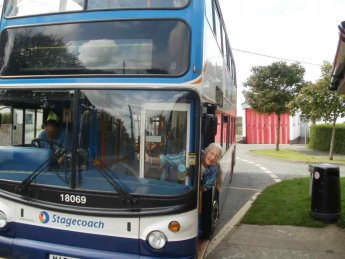
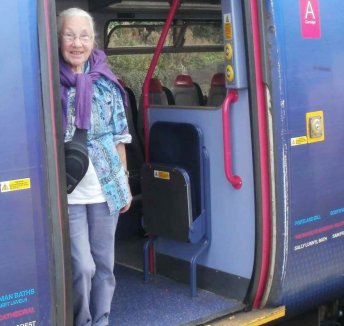
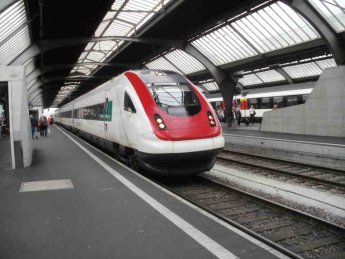
So as
usual it was bus to the station, train to Exeter, another train to London, Tube
to St Pancras, Eurostar to Paris. But this time, we took a train from Paris to
Zurich, where we spent a comfy night at the Rex (after a great Vegetarian supper at Bona Dea), so that instead of hurtling through the Alps
in the dark on a sleeper train like we have done in years past, we could savour
the beauty of that picture postcard Swiss scenery as we headed south towards
Milan.
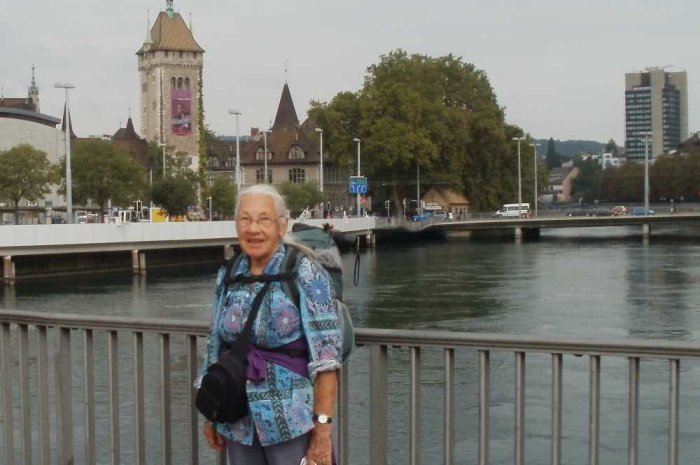
Me on the bridge in Zurich

(These
pictures were taken through the train window, so are somewhat spoiled by the
reflections!)
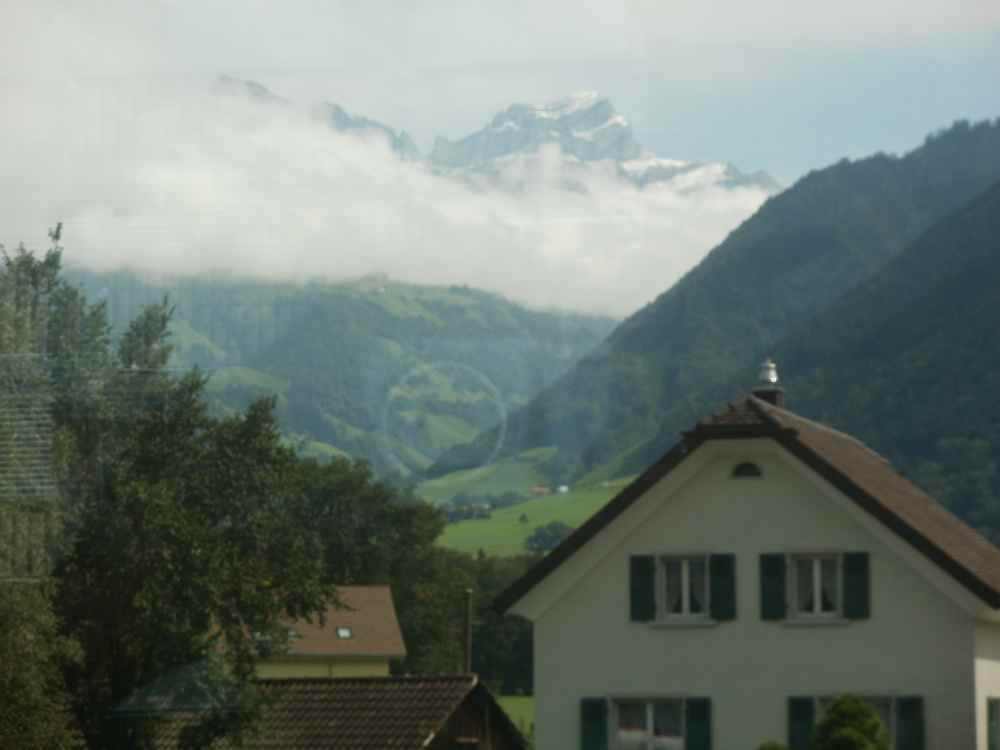
From Milan, another train took us to Genoa, where we found our way through busy streets to the ferry terminal and boarded our Tirrenia ferry 'Bithia' for the overnight crossing to this year's destination —the island of Sardinia.
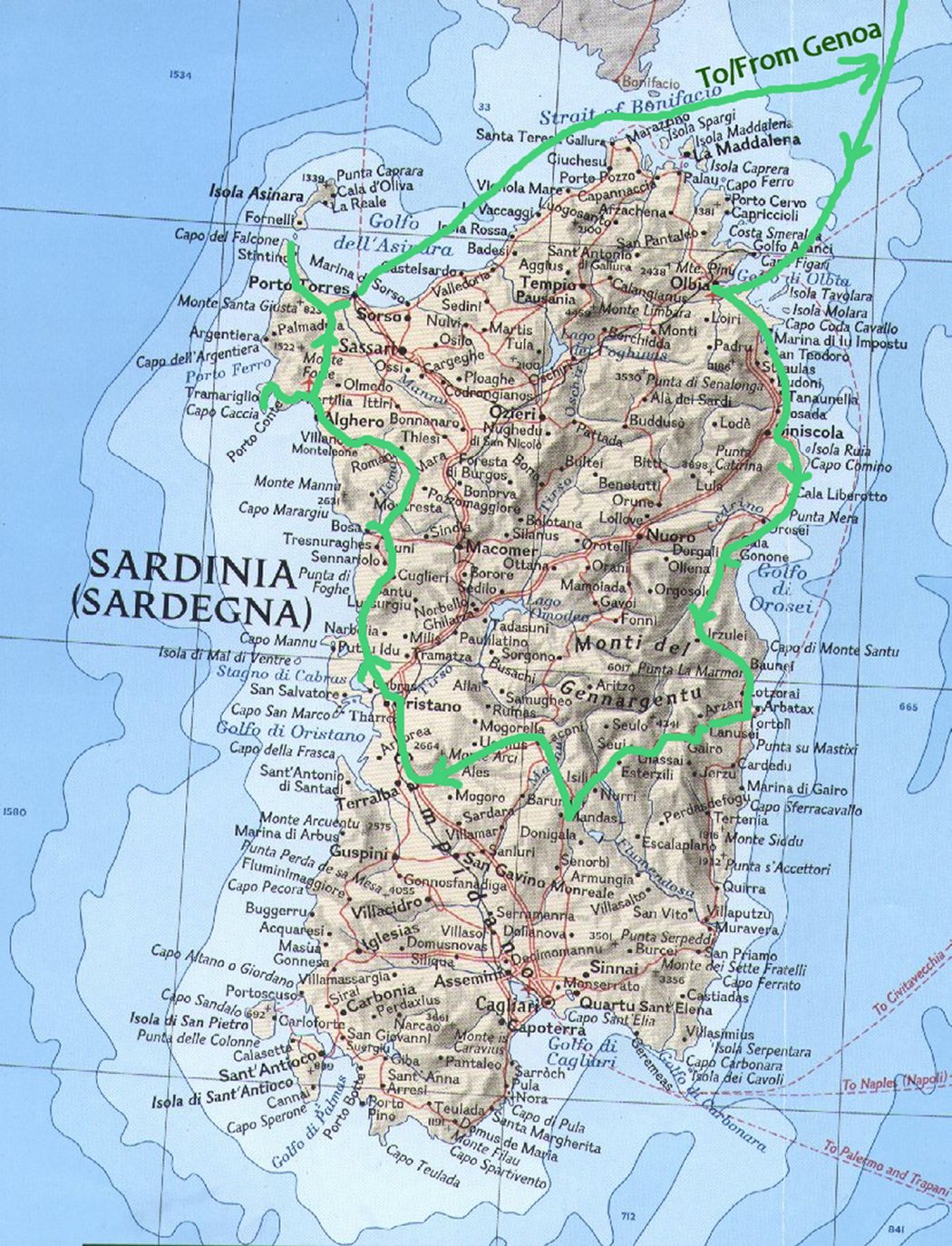
The ferry docked in Olbia at seven in the morning and a little bus whisked us a few hundred yards to the terminal, which was mostly deserted. We managed to locate the big blue ARST bus to Dorgali, which was waiting some distance away in the car park, with the driver taking a nap in the back seat. It was thundery weather, with sudden, short downpours, so we sheltered in the doorway of the ferry terminal until it was time to leave. Then it was into the centre of Olbia and another mad dash through the rain to a bar to buy our bus tickets, since they don't sell them on the bus. The bus then took us south for a two and a half hours to Nuoro, from where another bus brought us at last to the first of our Sardinian destinations – Cala Gonone.
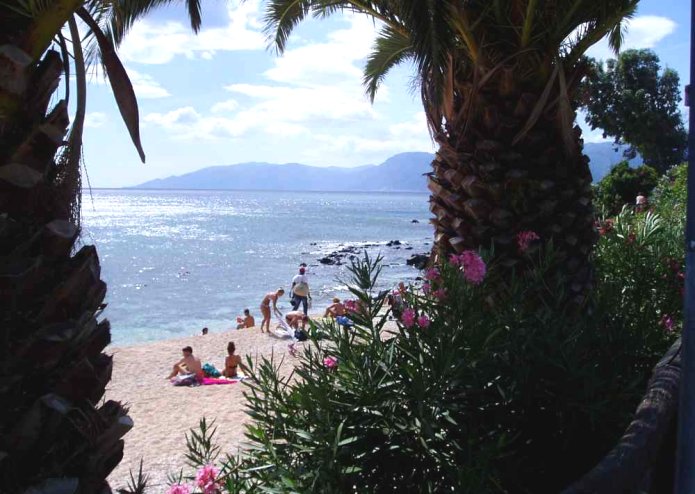
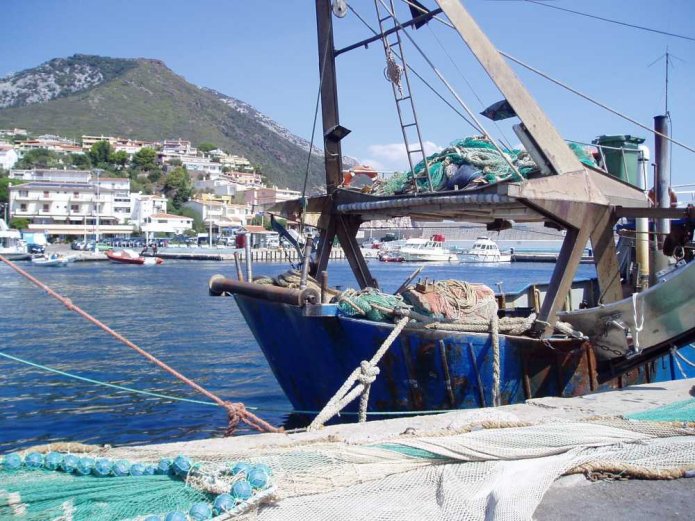
Cala
Gonone is a small and very pretty town that sits at the topmost end of the Gulf
of Orosei on Sardinia's east coast. The coastal scenery is renowned for the
beauty of its pristine little coves, many of which can only by reached by boat
or by a long trek down steep mountain paths. We stayed at Hotel L'Oasi, which
would have to be one of the loveliest hotels I have ever stayed at. It is
perched on a cliff, high above the town, with delightfully landscaped gardens
and a dining-room with a huge, sunny terrace. The meals there are so good that
almost all the guests choose to eat in. Here, we were introduced to different
traditional Sardinian dishes every night—all of which were prepared from fresh,
local ingredients and utterly delicious—and had our first taste of Sardinian
wine, made from the ubiquitous Cannonau grapes and our first sip of the traditional Mirto liqueur, made from myrtle leaves and berries. We stayed three days in Cala
Gonone, taking walks, each day in a different direction. The weather was
perfect and gloriously sunny and stayed that way pretty well all month.
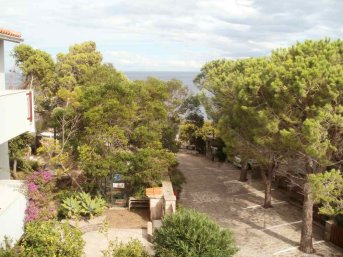
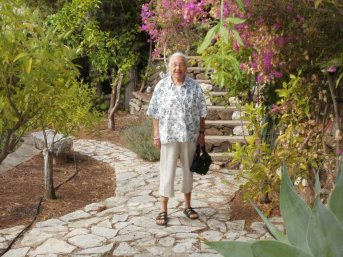
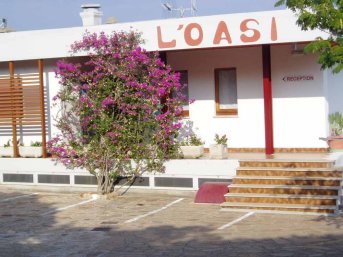
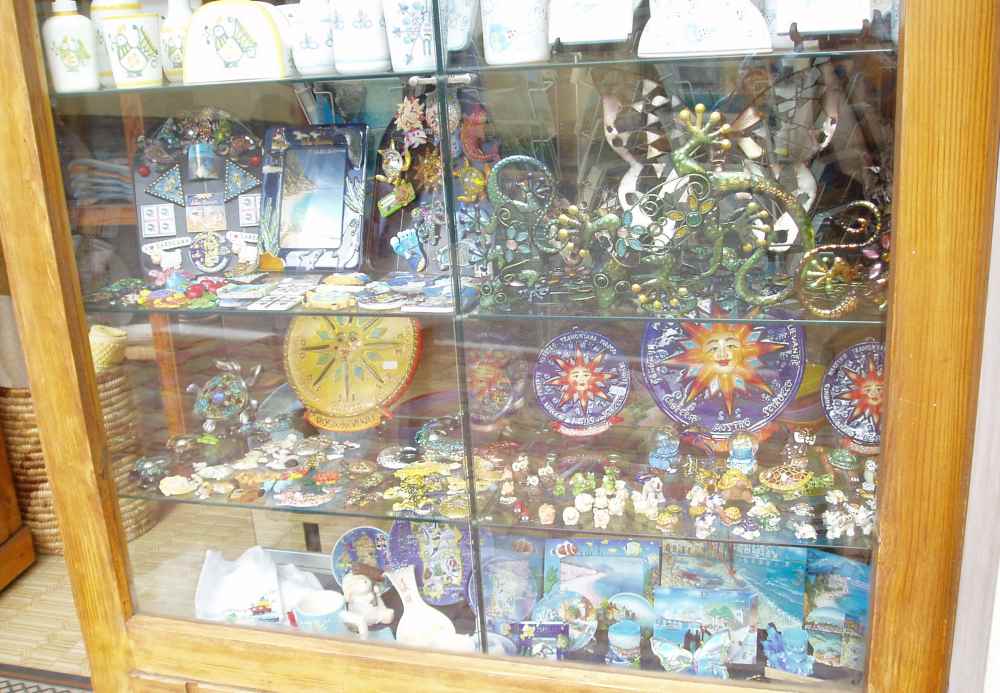
We met
some elderly weavers who showed us their delicate work, and explained the
techniques they had followed since childhood. And
we enjoyed all the fascinating and colourful handcrafts on sale.
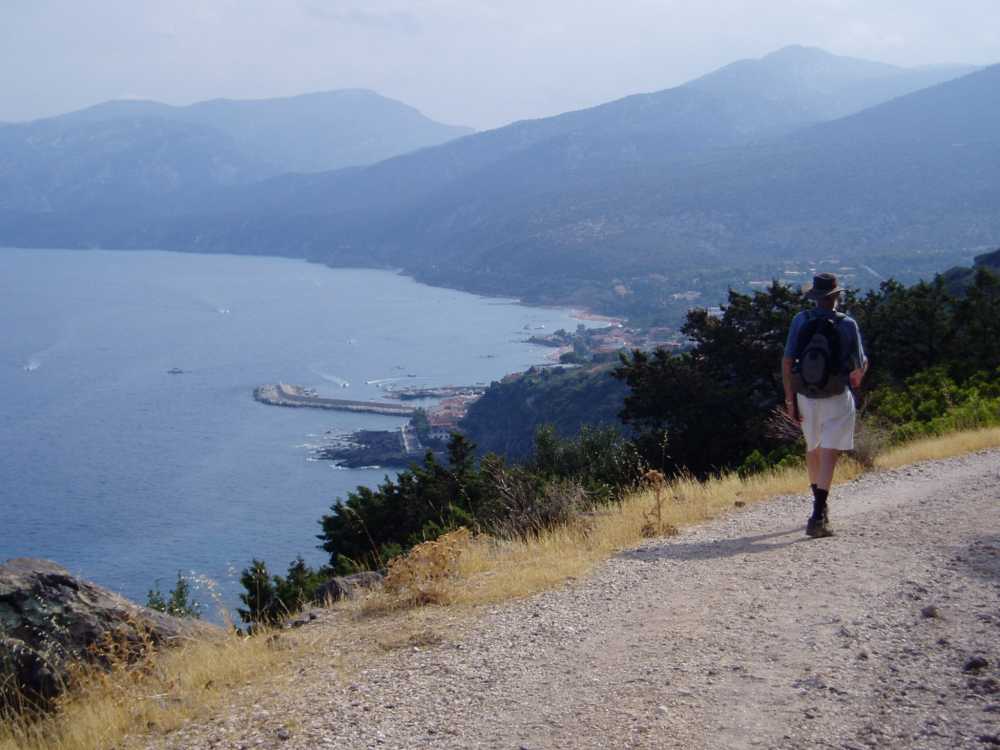
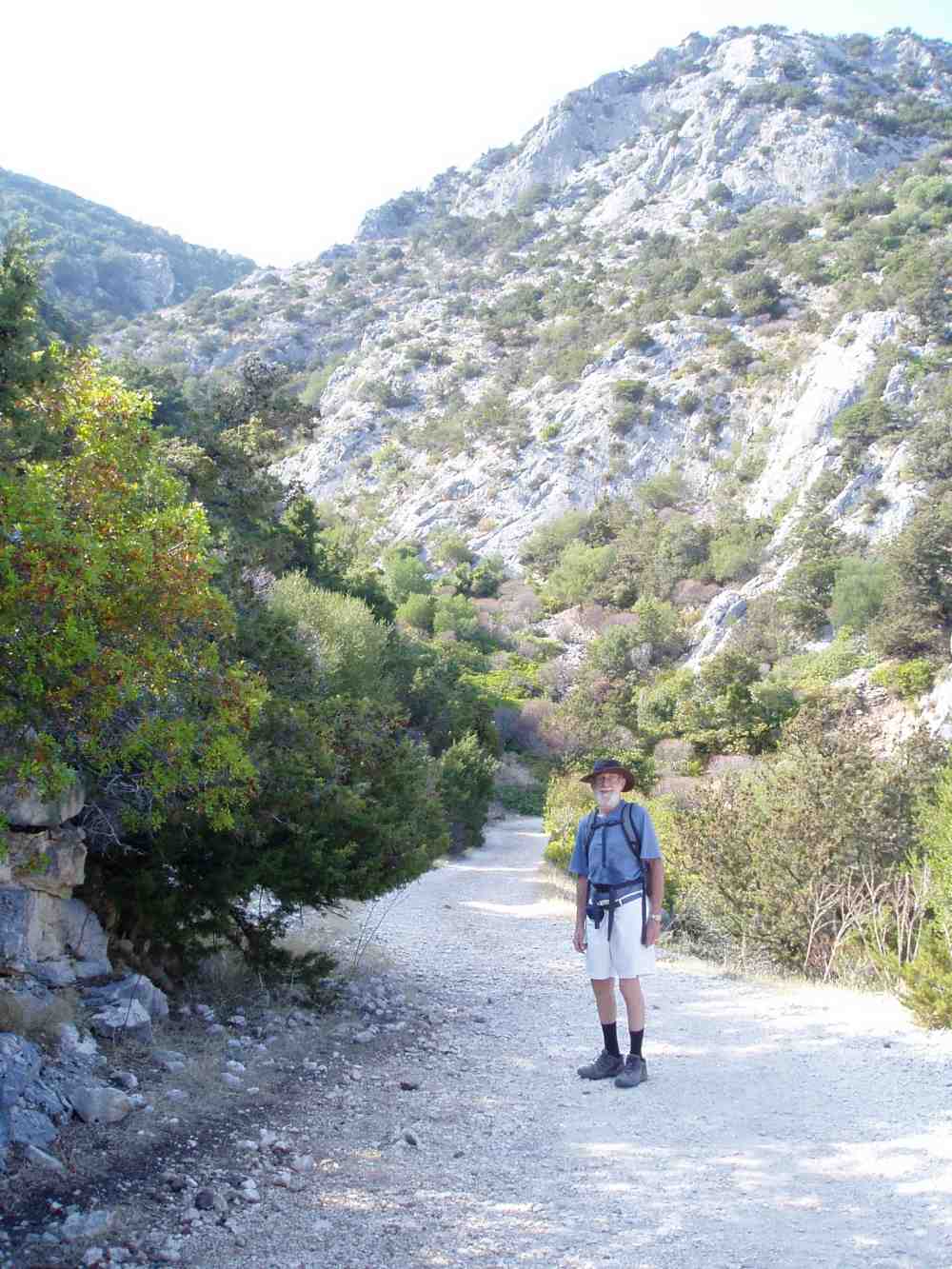
Then it
was back to Dorgali, where we strolled around, bought a bunch of delicious
muscatel-flavoured grapes and sat over coffee as we waited for the bus that
would take us further south through the mountains to another small town,
Lotzorai.
There, we met Anne and Peter, expats who run The Lemon House, a
four-room guest house for people who love to do outdoor things like hiking,
cycling and rock-climbing.
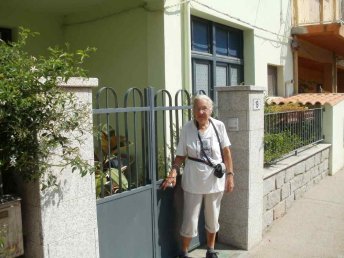
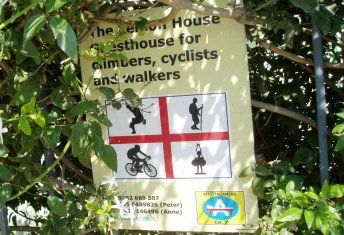
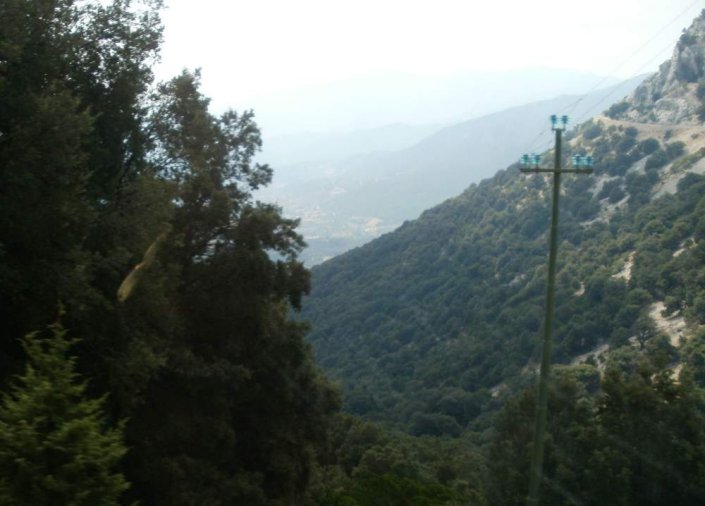
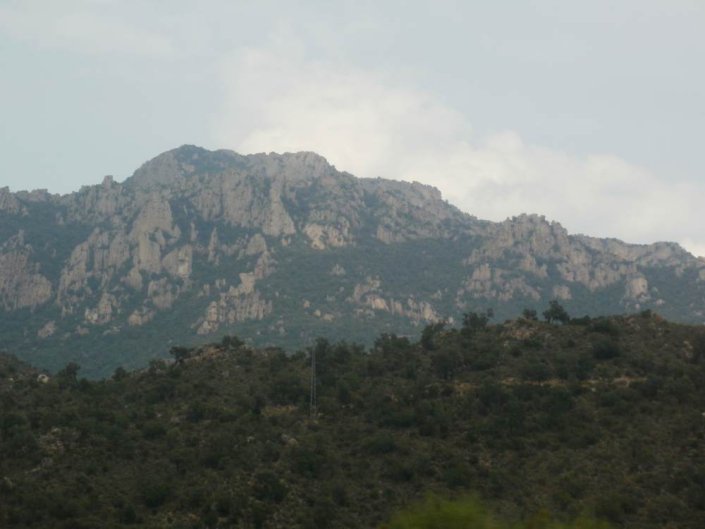
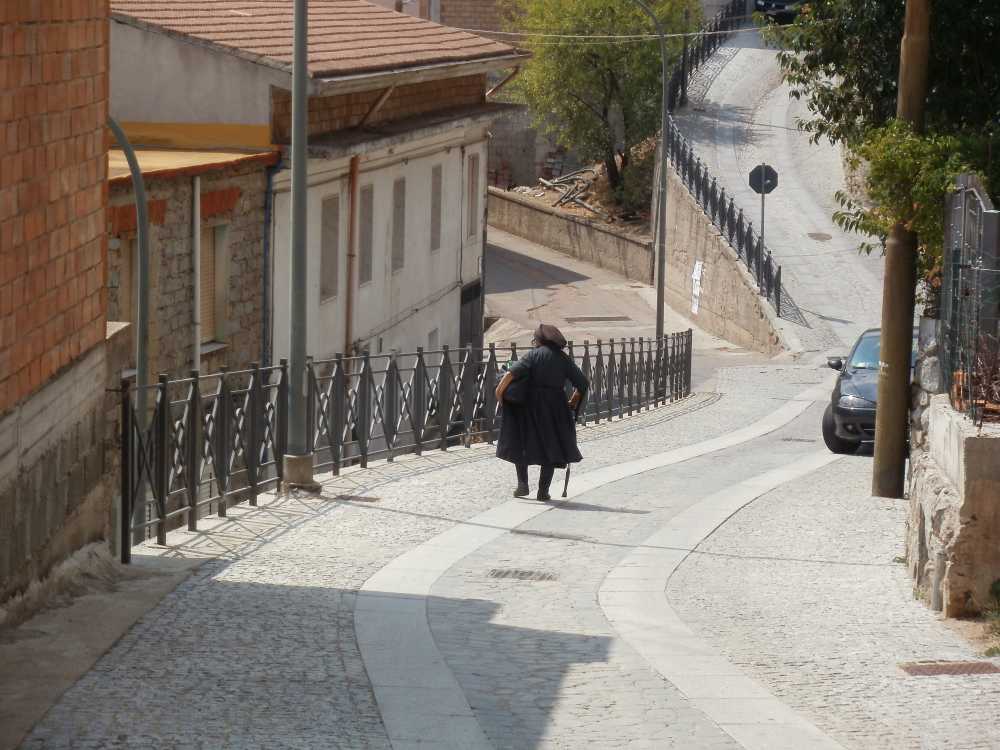
This woman, with her basket under her arm, we had met on the bus. She was heading home.
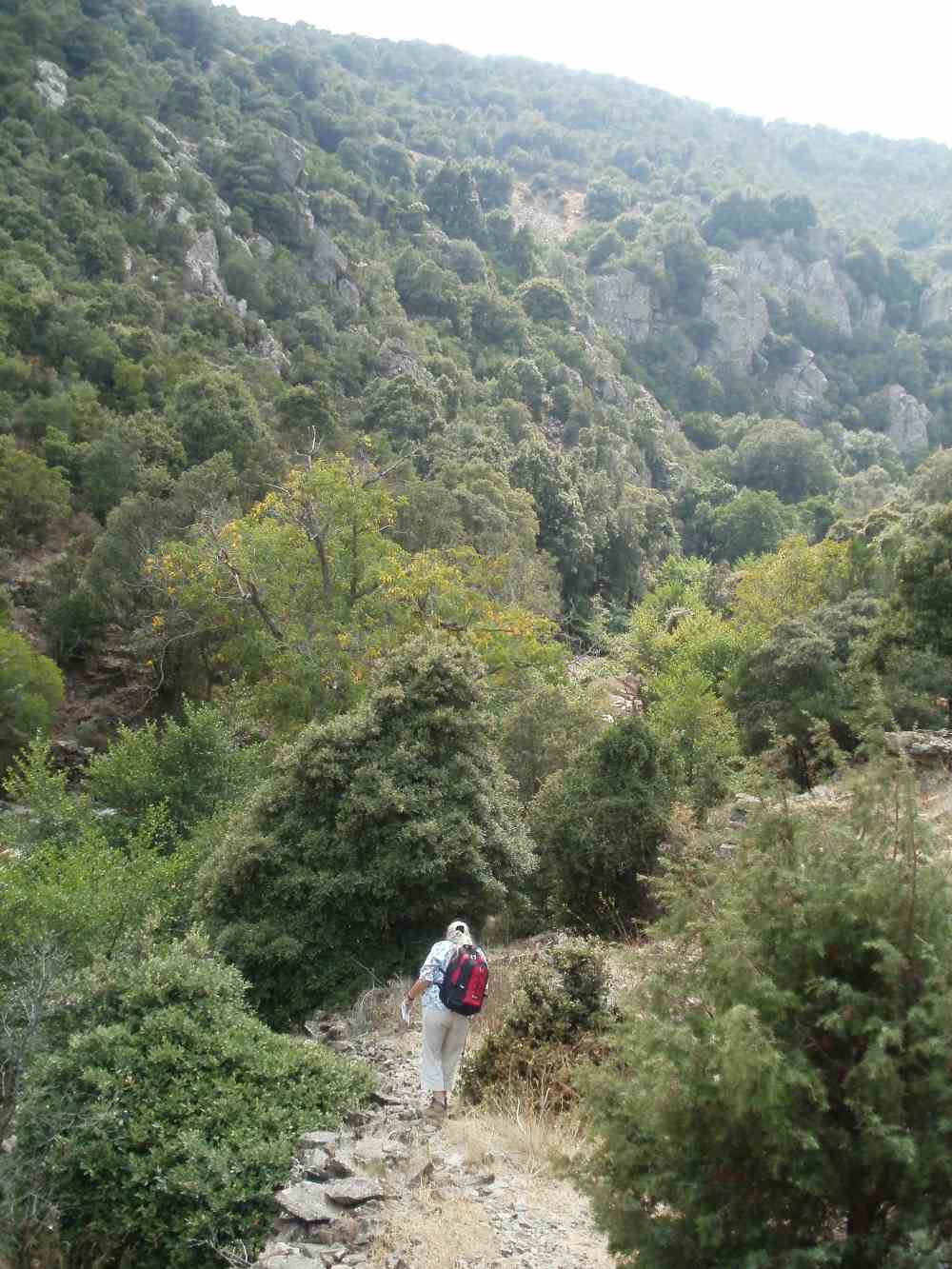
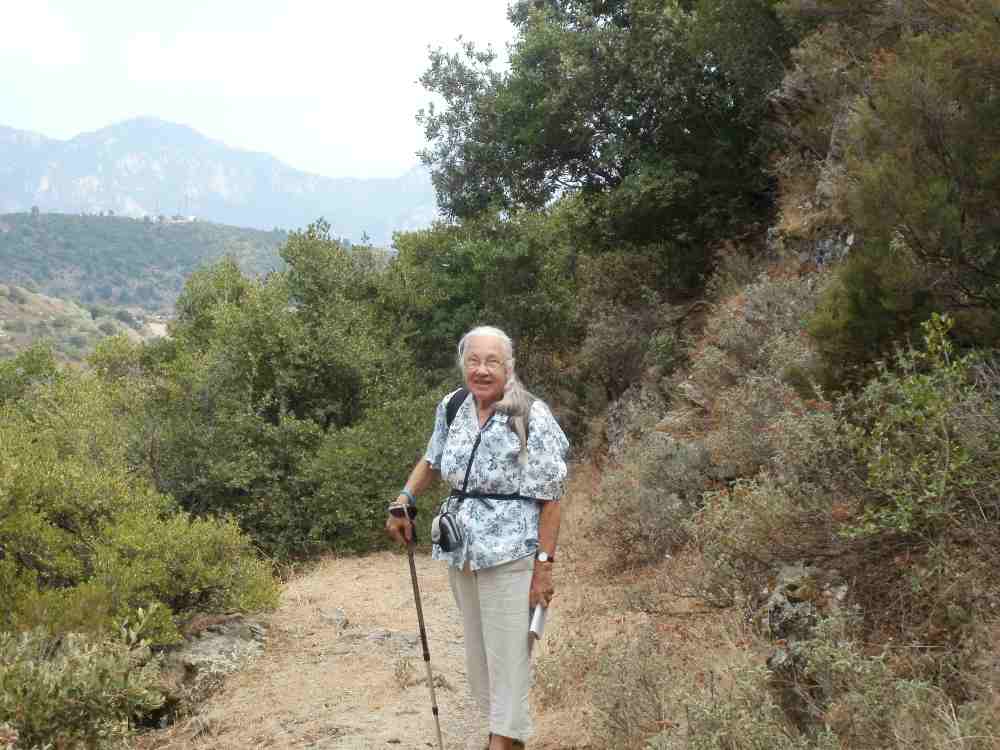
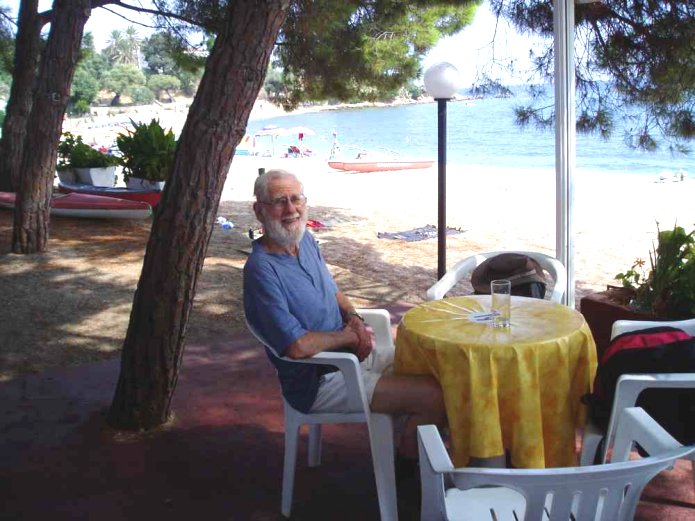
Below, thunderheads building up over the mountains as we walked back along the road from Santa Maria Navarrese to Lotzorai.
Another day,
we found a pleasant path to the coast, through pine trees, and sat awhile
beside an inlet to watch fish jumping and ducks diving and to gasp at the flash
of colour as a kingfisher swooped by. We also walked along the coast road to
Santa Marian Navarrese, for lunch and a swim. On the way back, we were
caught in a sudden thundershower (the second of only two rain showers in
our entire trip) but within a matter of seconds a local couple in an old car
had stopped for us and they very kindly gave us a ride back to where we were
staying.
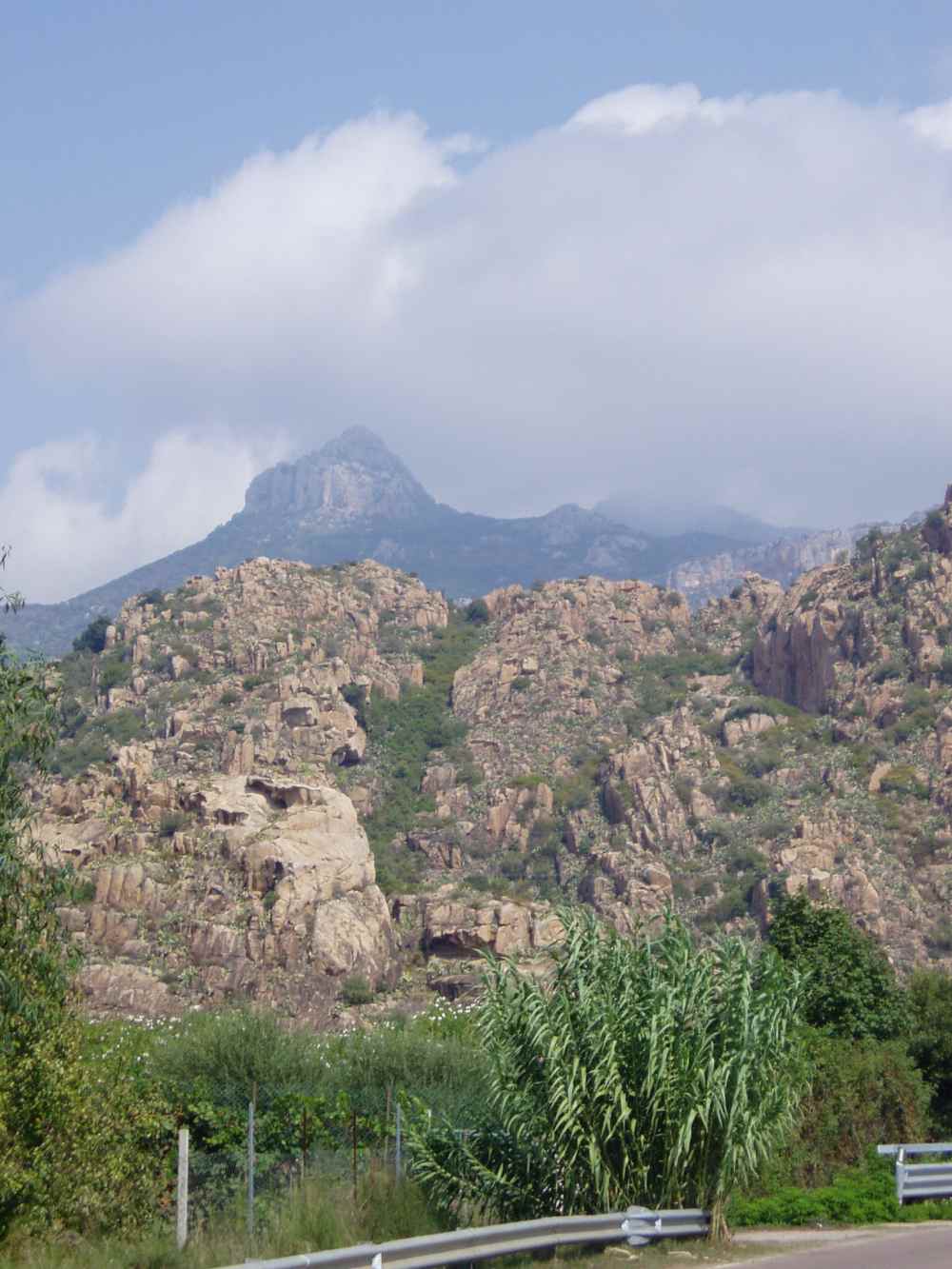
One of the most delightful experiences available to the tourist in Sardinia is a ride on Il Trenino Verde – the 'Little Green Train.' – a narrow-gauge railway that snakes it way through and around some of the loveliest scenery on the island. Famously popularized by D.H.Lawrence, who travelled on it with his wife Frieda, it runs only in the summer months and we were there right at the end of its season.
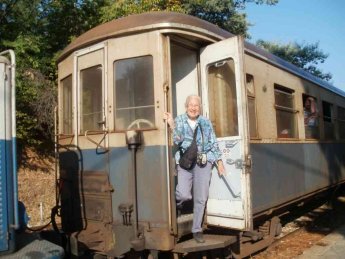
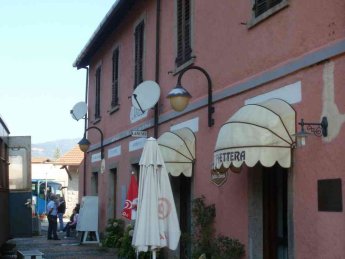
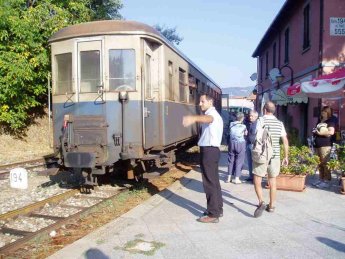
“
It’s a strange railway. I’d like to know who built it. Scooting up hill
and down dale and around sudden curves with the utmost
nonchalance...runs up a hill like a puppy panting, and looks
around...shaking us in another direction behind him. with great
indifference."
David Herbert Lawrence, 'Sea and Sardinia' (1921)
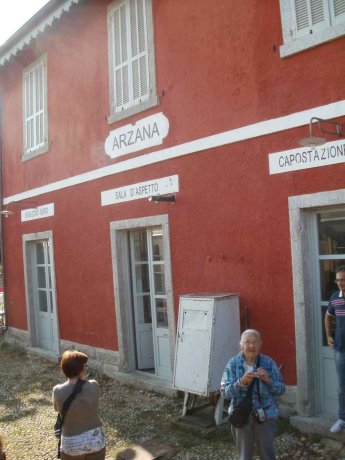
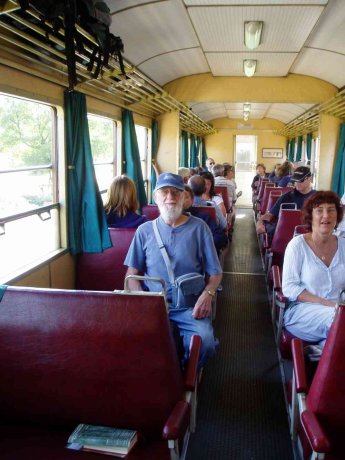
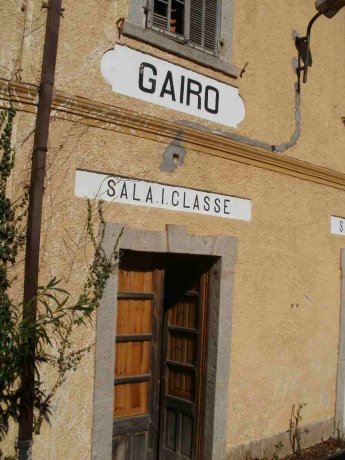
There are
four routes and we took two of them. The first runs from the port of Arbatax, at
the southern end of the Gulf of Orosei, way inland to Mandas and the second
runs from Mandas up to Sorgono. Due to some work being done on the track, we
had to take the bus as far as Lanusei, an hour or so up the track, and go from
there. Even so, the journey on to Mandas took four hours. The scenery, as we
wound slowly through the mountains, most of the time at the pace of a horse and
cart, was wonderful. This really was 'slow travel,' as the train's leisurely
pace gave us the chance to soak in everything we saw.
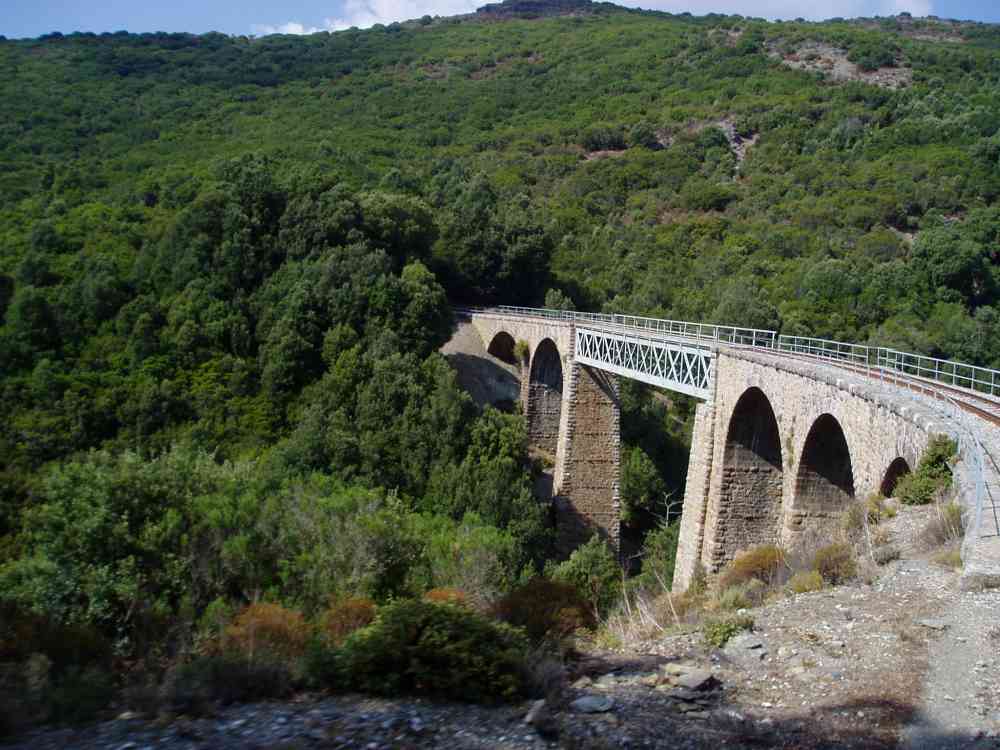
This included nuraghi, ancient stone buildings three thousand years old that are found only in Sardinia.
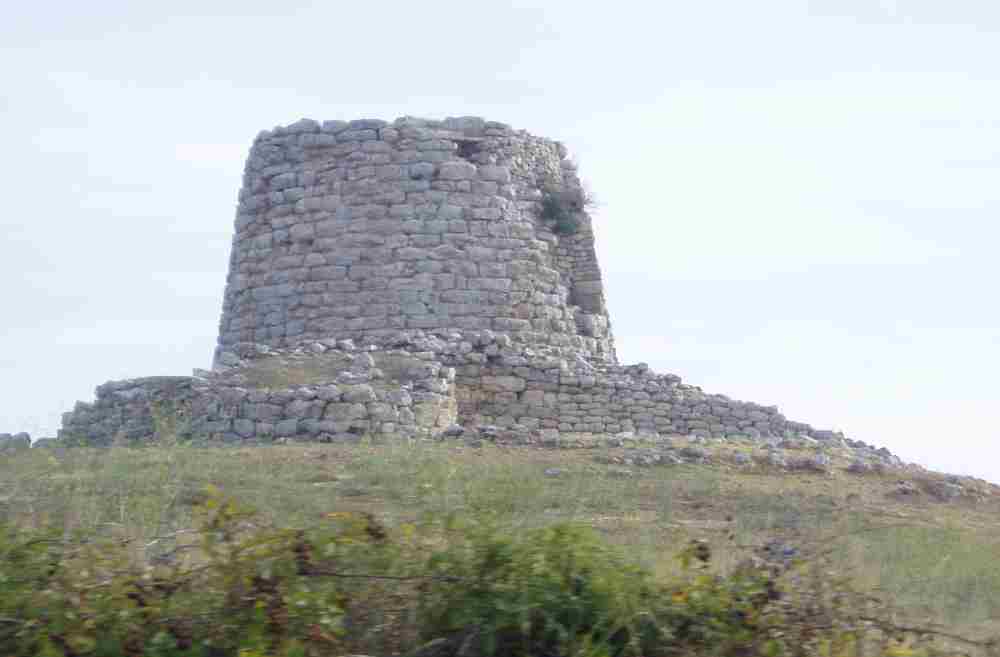
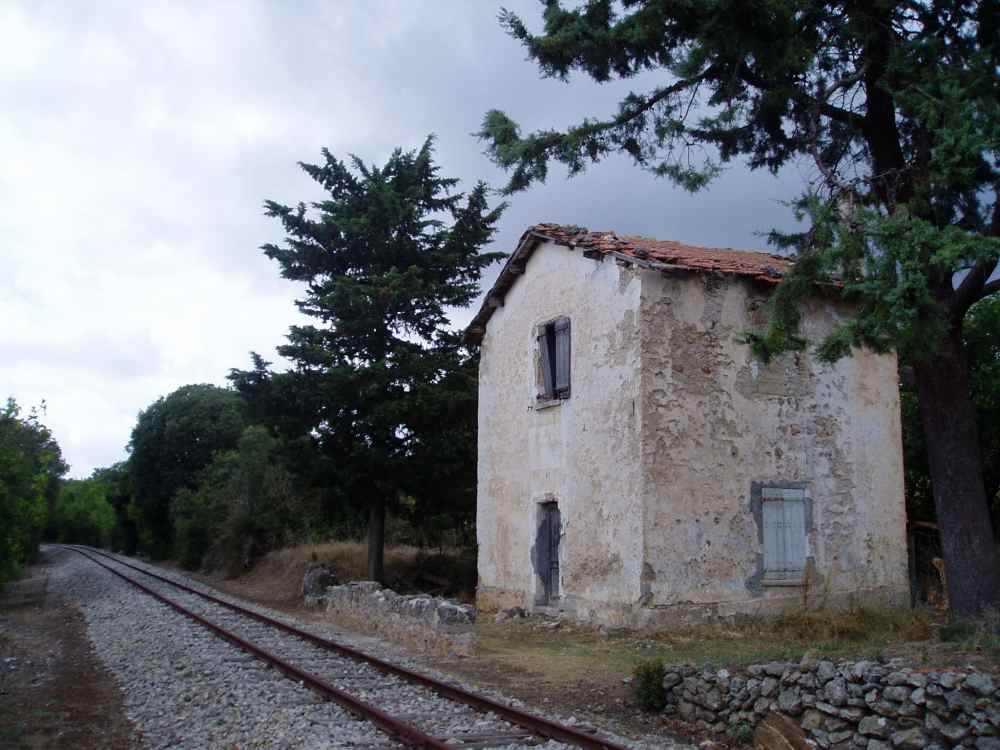
We stayed
overnight in Mandas, at a gorgeous little B&B called L'Antica Locanda
Lunetta. This place was absolutely beautiful. Our hostess, Barbara, as she
served us our delicious breakfast the next morning, explained that the
building, an ancient, derelict coach house, was originally bought by her uncle
and the family had lovingly restored it over many years. We could tell that she
was proud of what they had created, and so she should be. The work is ongoing
and while we were there one of the outbuildings, on the other side of the
cobbled courtyard, was being turned into accommodation.
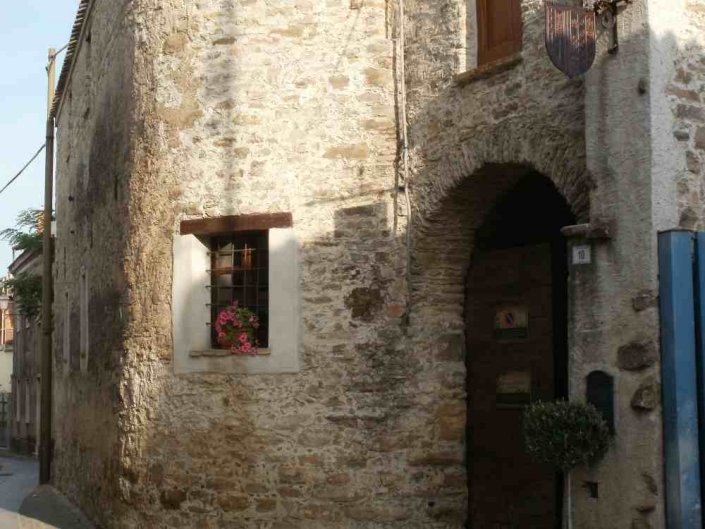
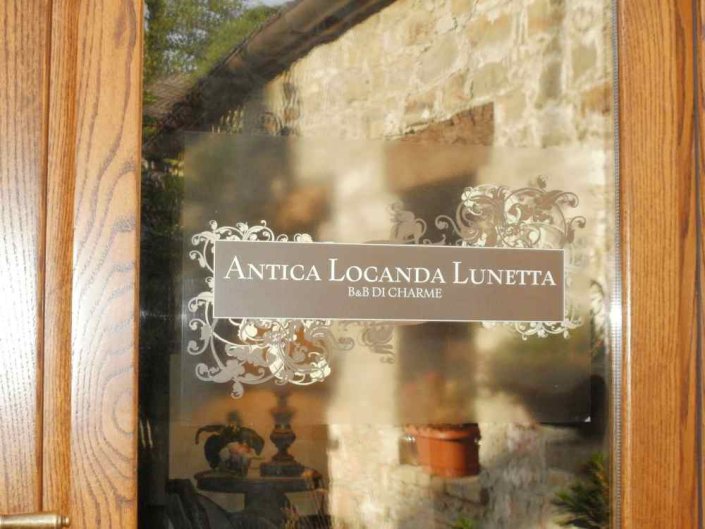
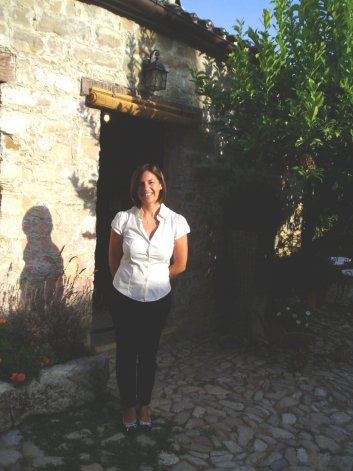
The lovely Barbara,
smiling in the courtyard
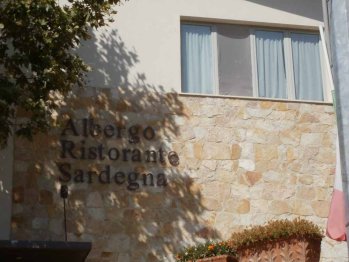
This is a perfect area to explore on foot with many walks starting right from town, beginning with the Parco Naturale Aymerich di Laconi (the Aymerich Natural Park), 22 hectares of exquisite woodland incorporating trails, waterfalls, grottoes, the ruins of a medieval castle and a grand Cedar of Lebanon tree.
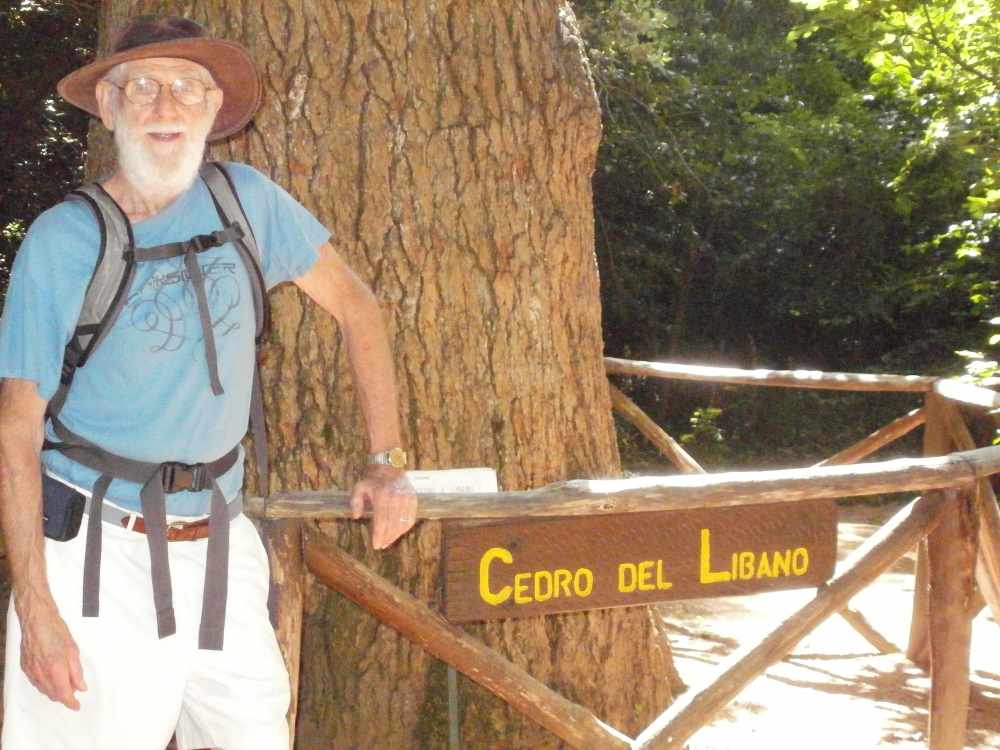
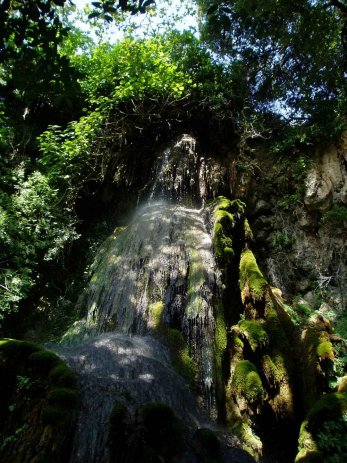
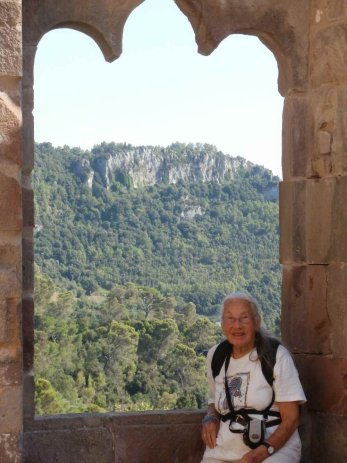
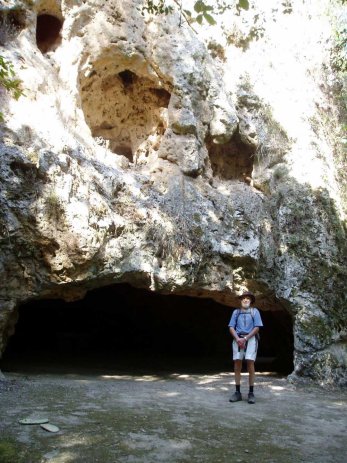
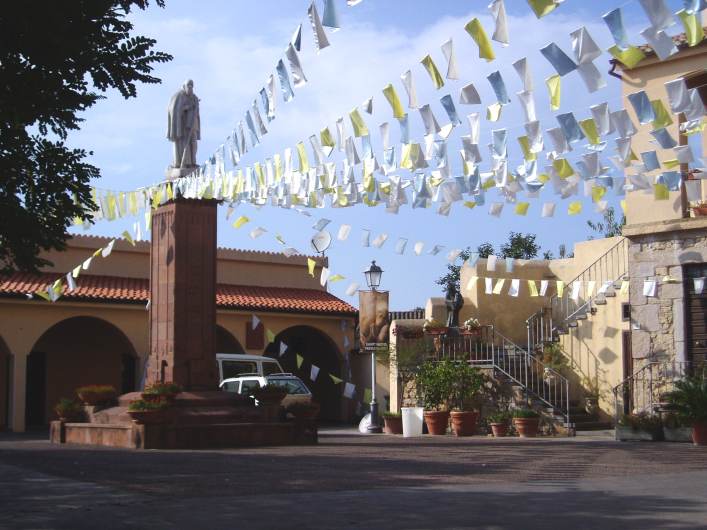
The flags were still out for Ignazio in the piazza where his statue is.
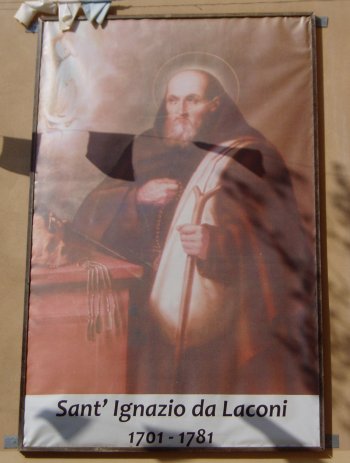
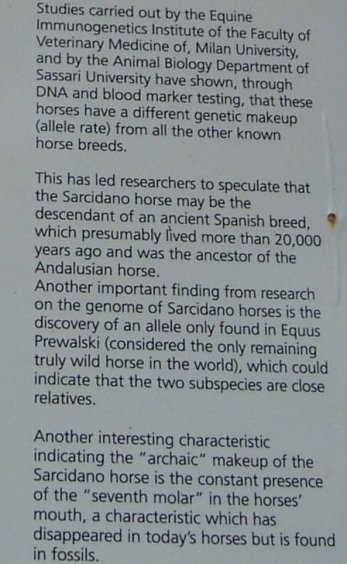
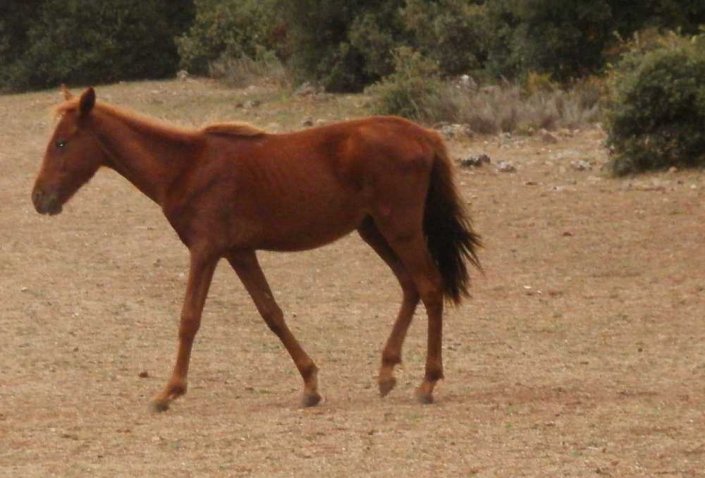
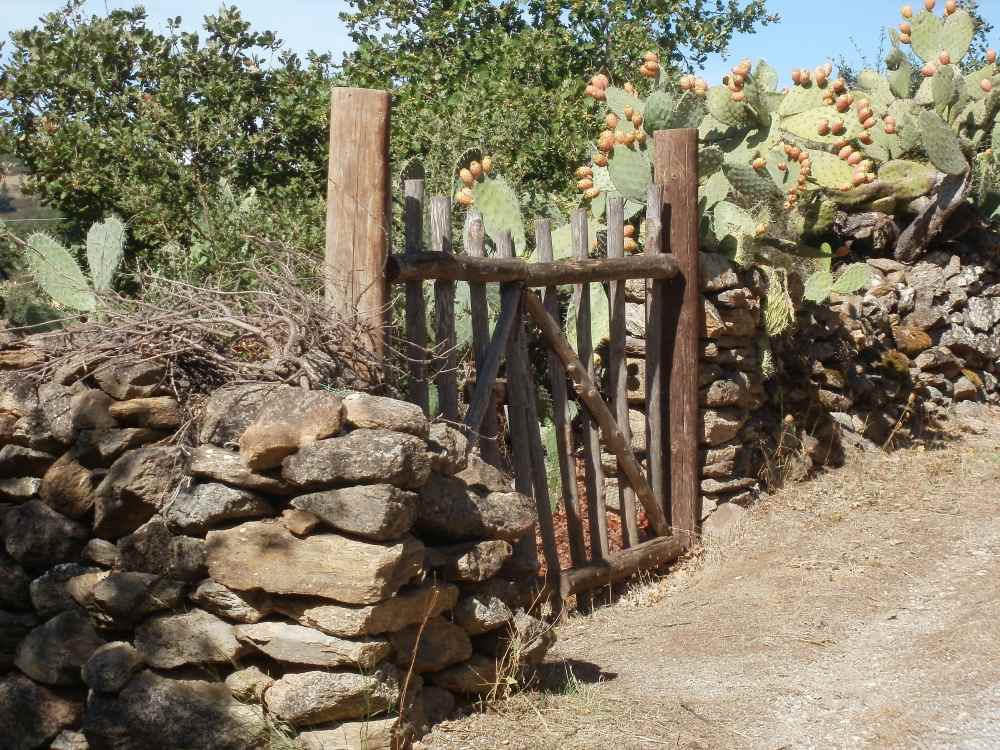
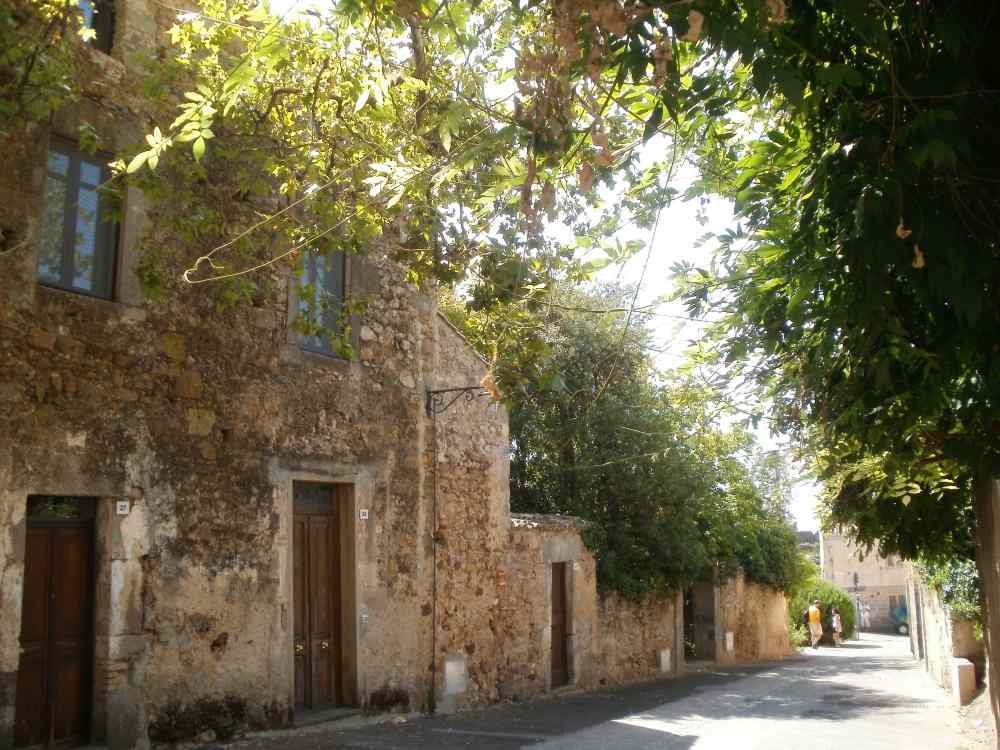
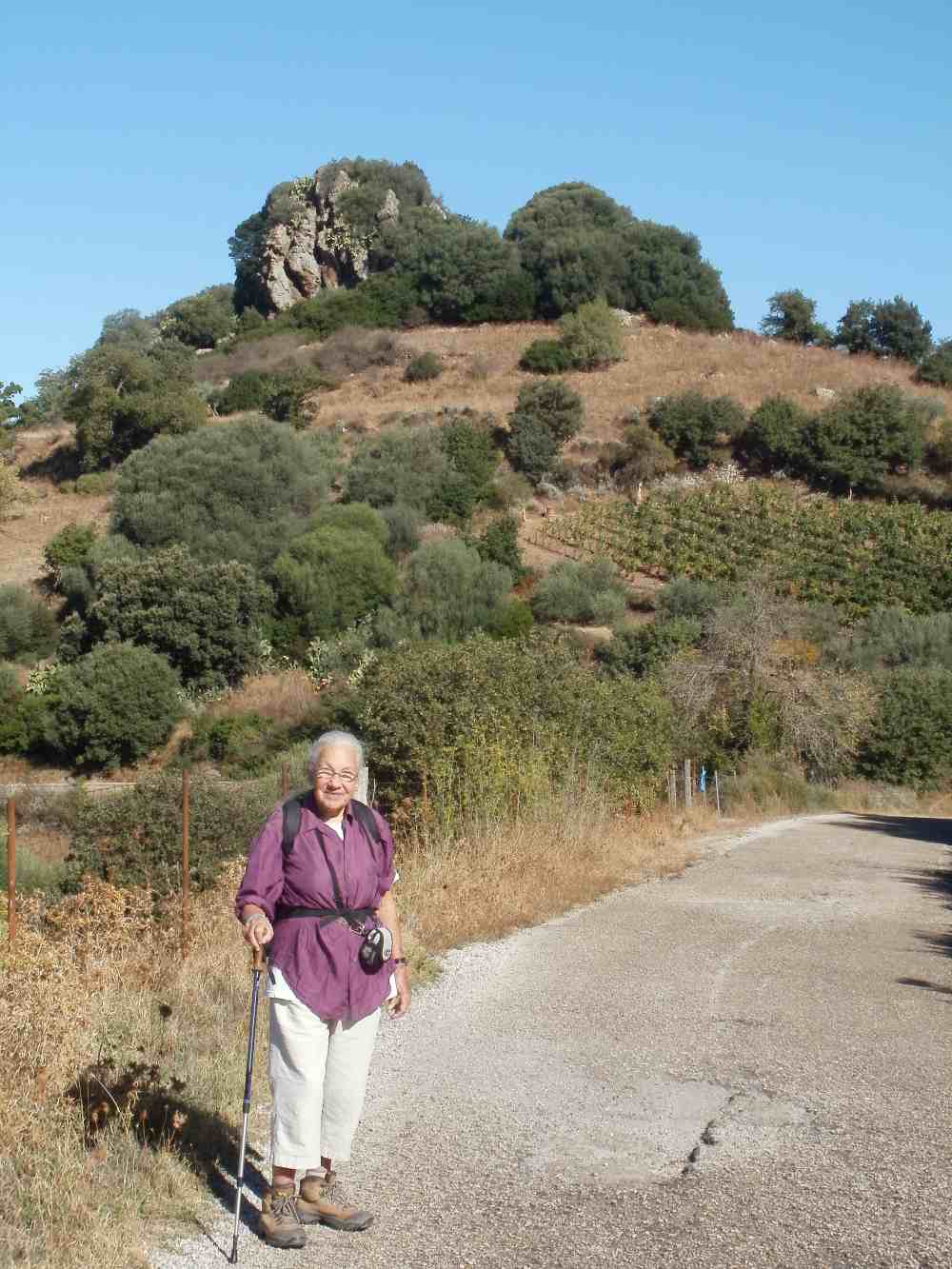
Figs were growing wild, everywhere... what joy!! And on one of our walks, a local landowner stopped to talk to us and gave us some large, luscious figs that he'd just picked from one of his trees. What a gift!
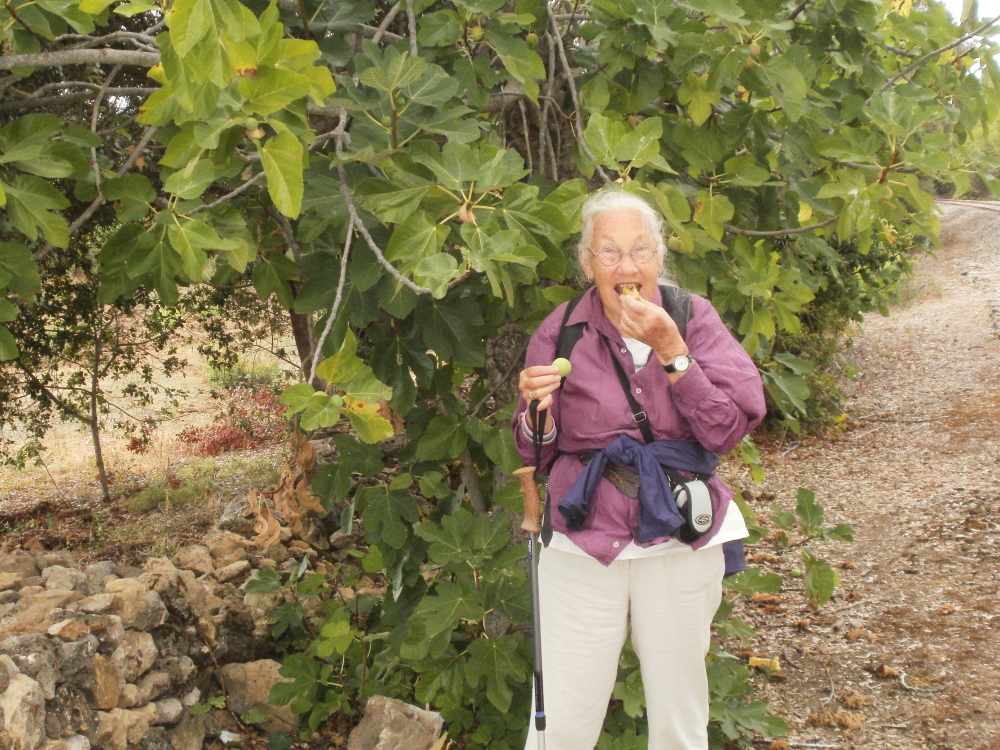
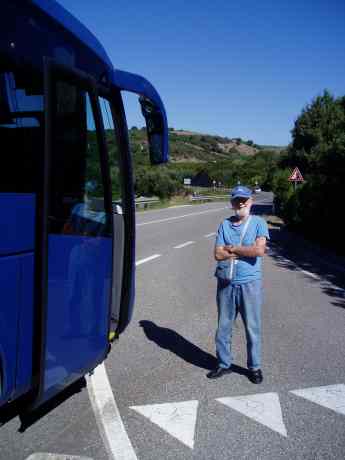
From there, after a nice lunch in a café near the bus station, we took another bus north along the coast, then inland a little through some pretty little hill towns before descending to our next destination, Bosa.
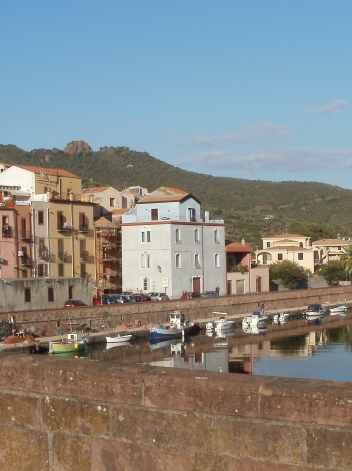
The ancient town of Bosa sits just inland, a mile and a half from the sea, along Sardinia's only navigable river, the Temo. Its brightly coloured houses cluster between the castle, on its hilltop, and the palm-fringed river. As usual, the centro storico—the original town of narrow, cobbled streets and twisting alleyways—has by now been enclosed within a newer town with modern shops and buildings and several gracious piazzas. But the spirit of the town is intact. Although some tour buses stop here, on the other side of the river, and groups of tourists wander briefly through and take photographs, basically it is off the main tourist map and it feels like a real town with ordinary people going about their ordinary lives, thronging the Tuesday street market, fetching their groceries, walking their dogs, chatting, sipping coffee…
This was our street.
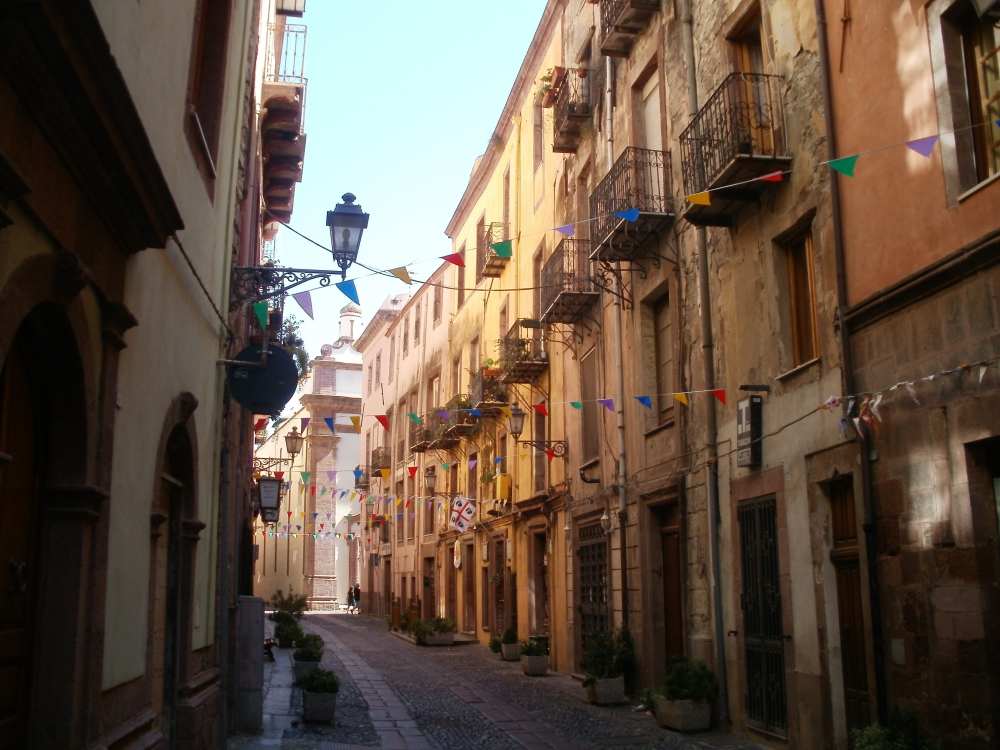
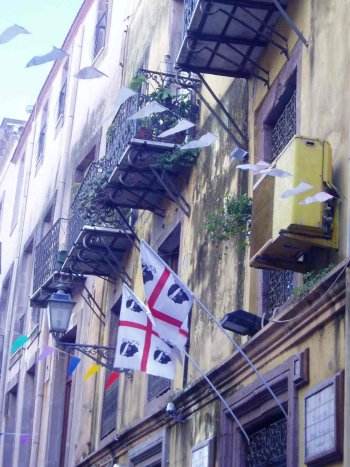
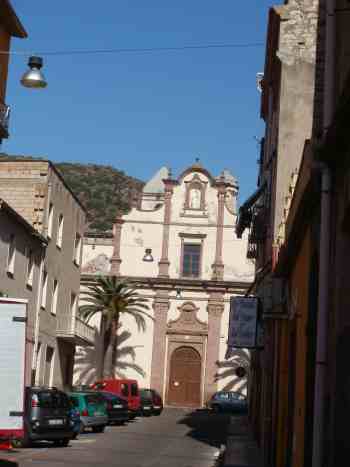
And here
(right), is Sky unlocking our front door. There were 66 marble steps up to our apartment.
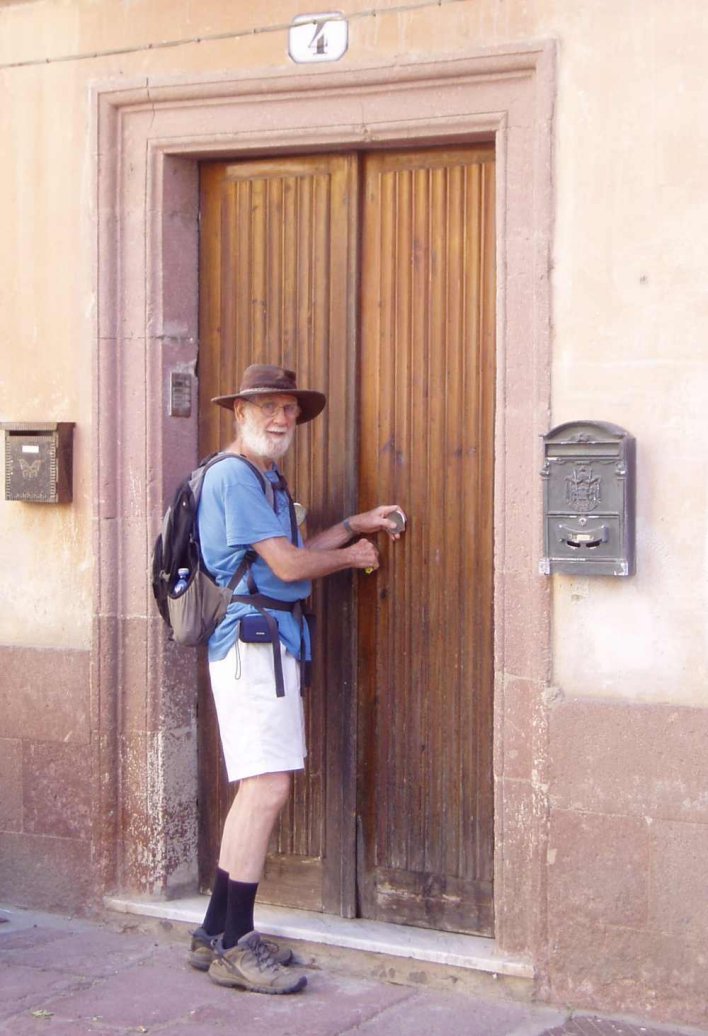
For us, it was love at first sight. From our window, on the top floor of this old building in the old town, we looked out over the river, watched the heron fishing in the early morning, watched the fishermen in their boats along the river bank, watched the sunrise over the mountains and wished we could stay for ever.
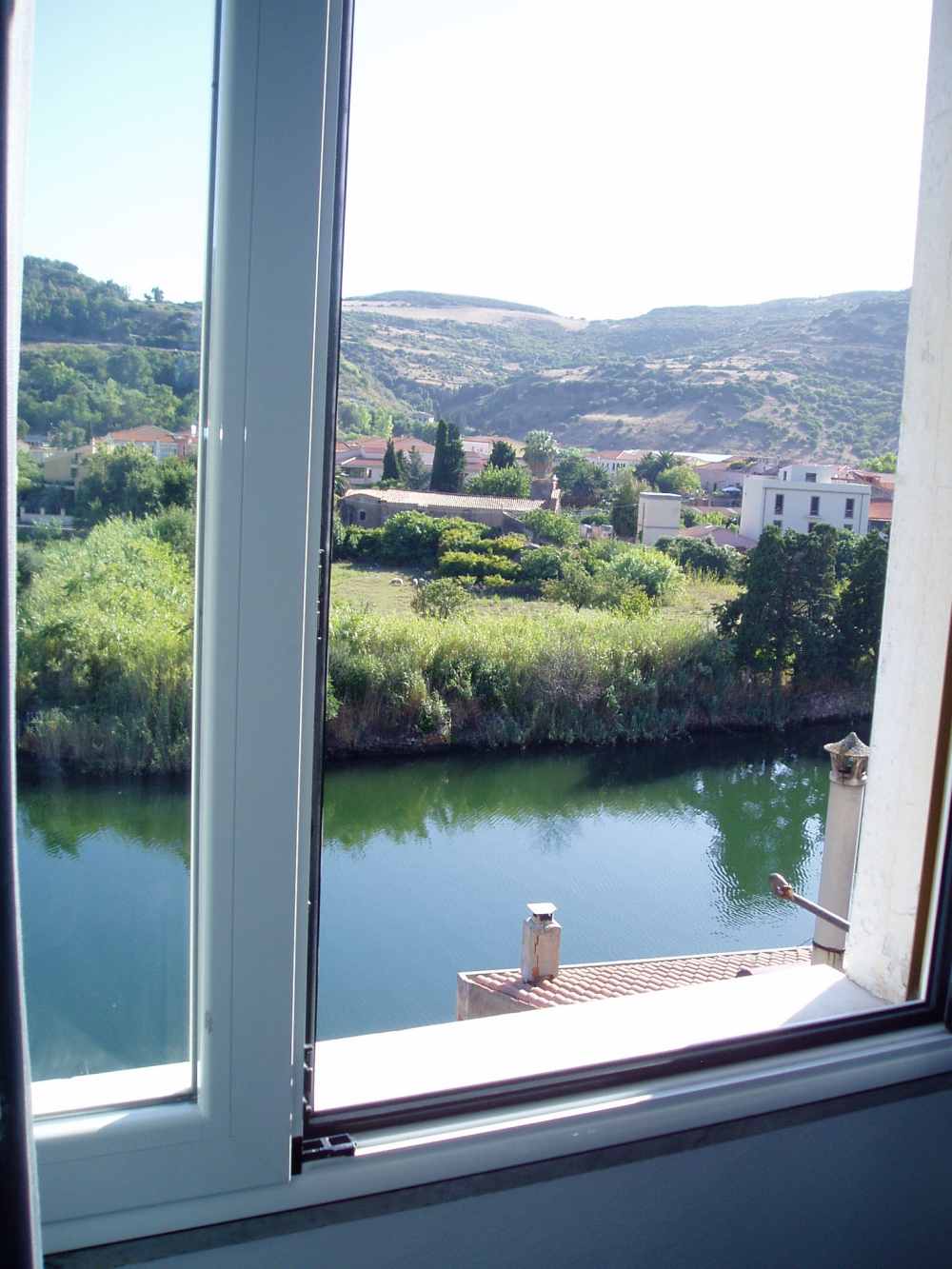
Especially as, after a pleasant walk of a mile and a half down the river, there is a wide and sandy beach, perfect for a swim in the warm waters of the Mediterranean. We even had a tiny roof terrace, with a view to sea and mountains, and our clothes hung in the sunshine were dry in no time at all (which felt like a miracle to us after this year's ultra-wet English summer!) Oh what a heavenly place.
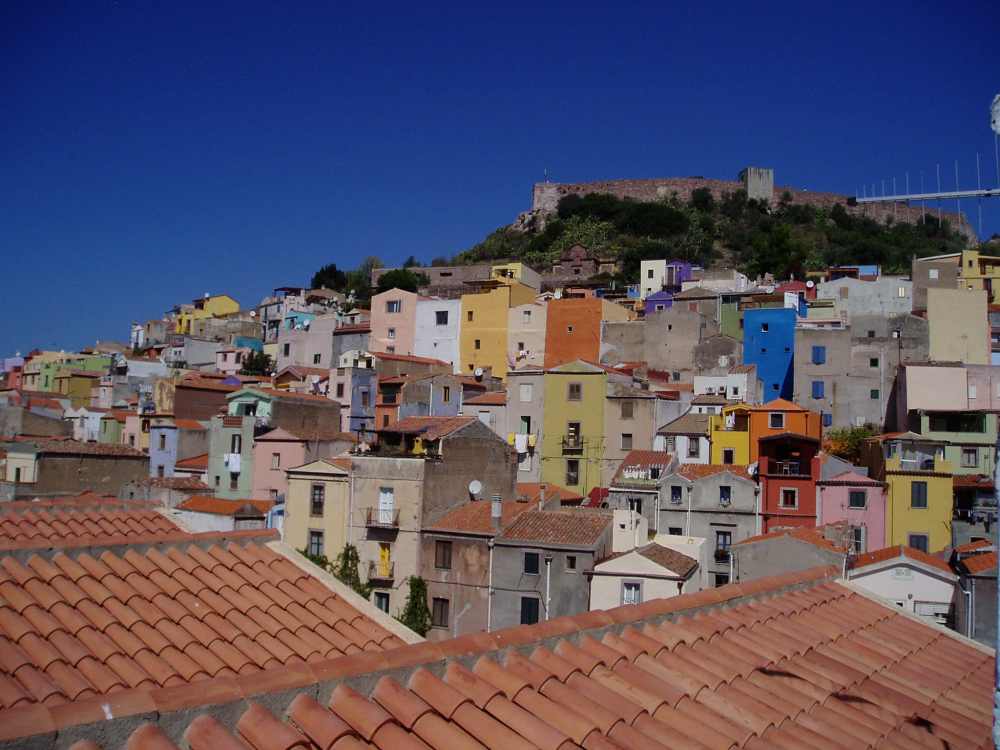
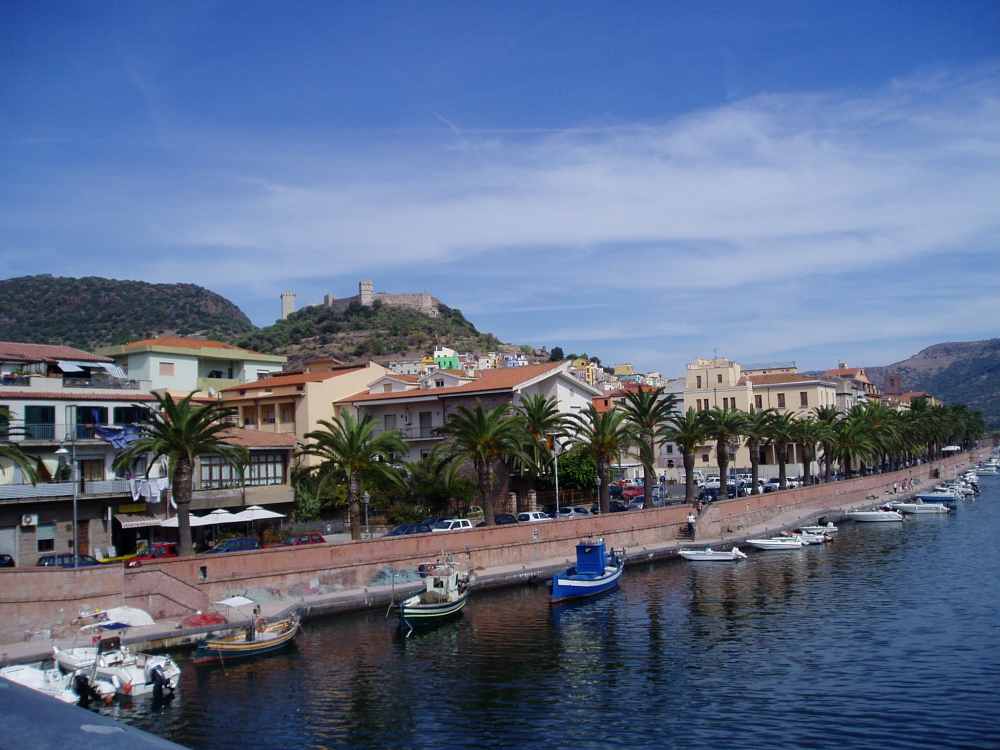
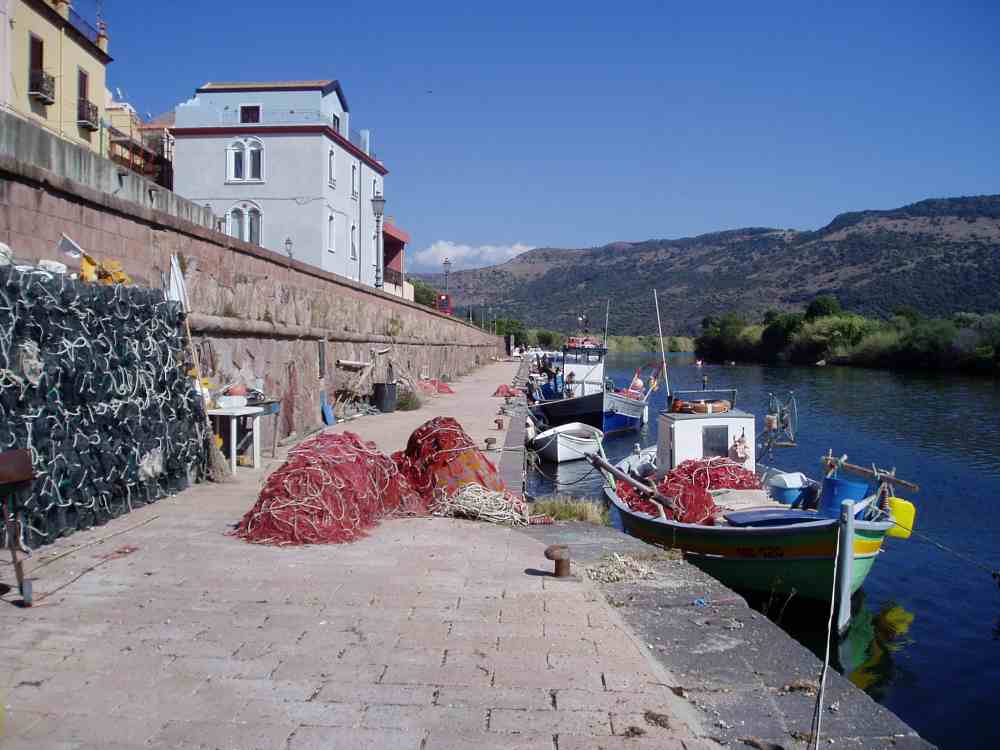
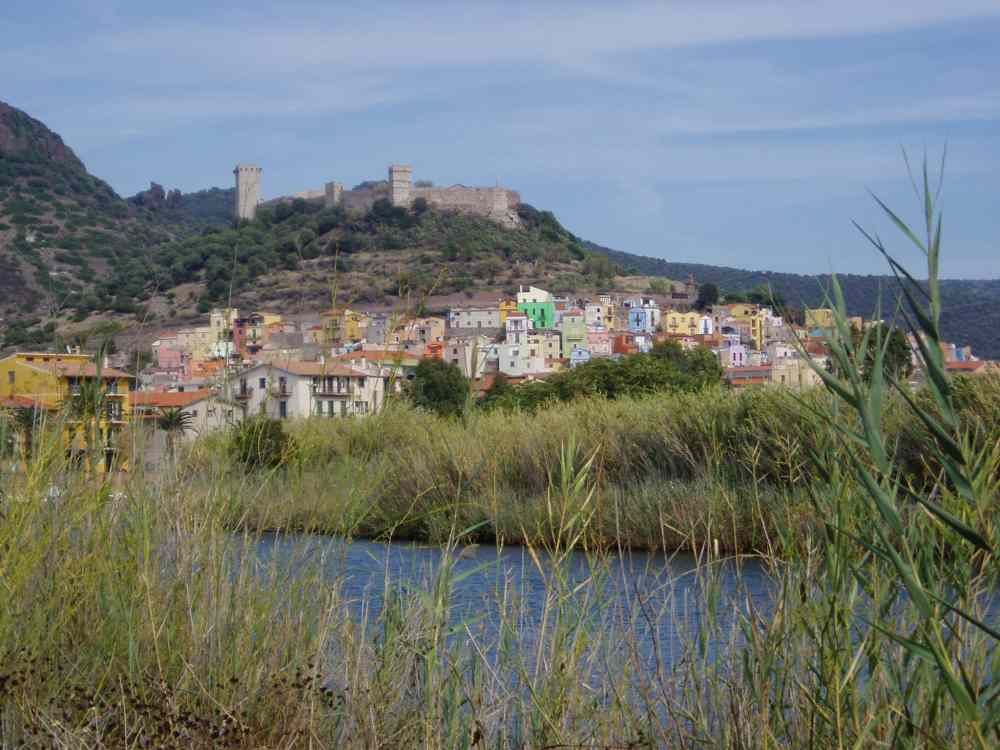
The River Temo often looks green but I am sure it must be a very healthy waterway as I have never in my life seen a river so full of fish!
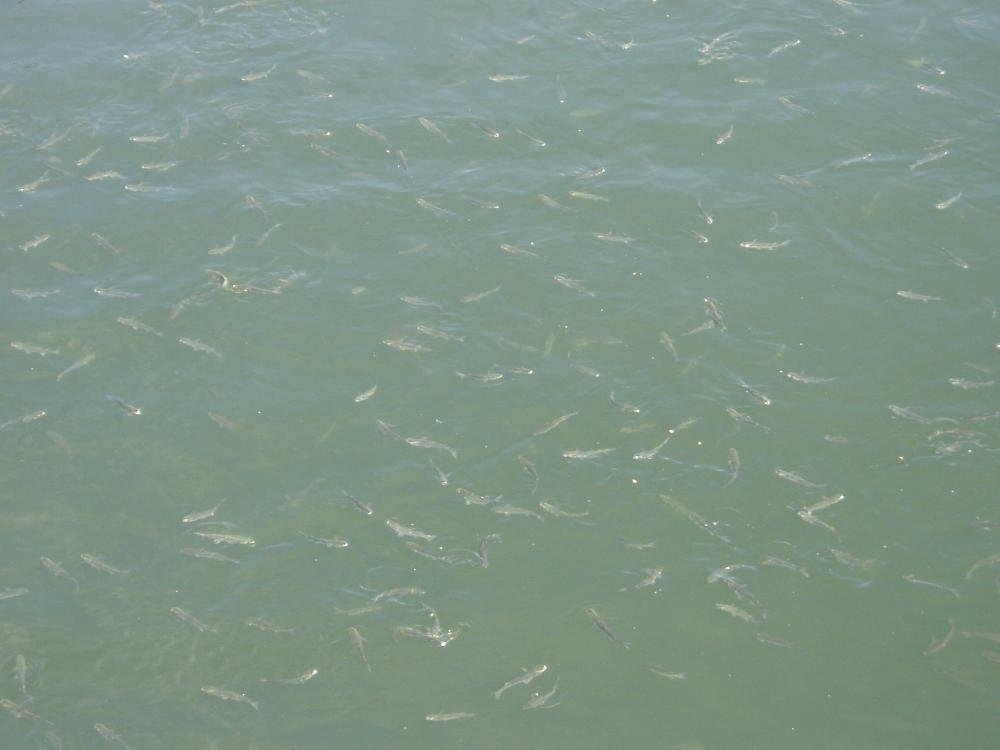
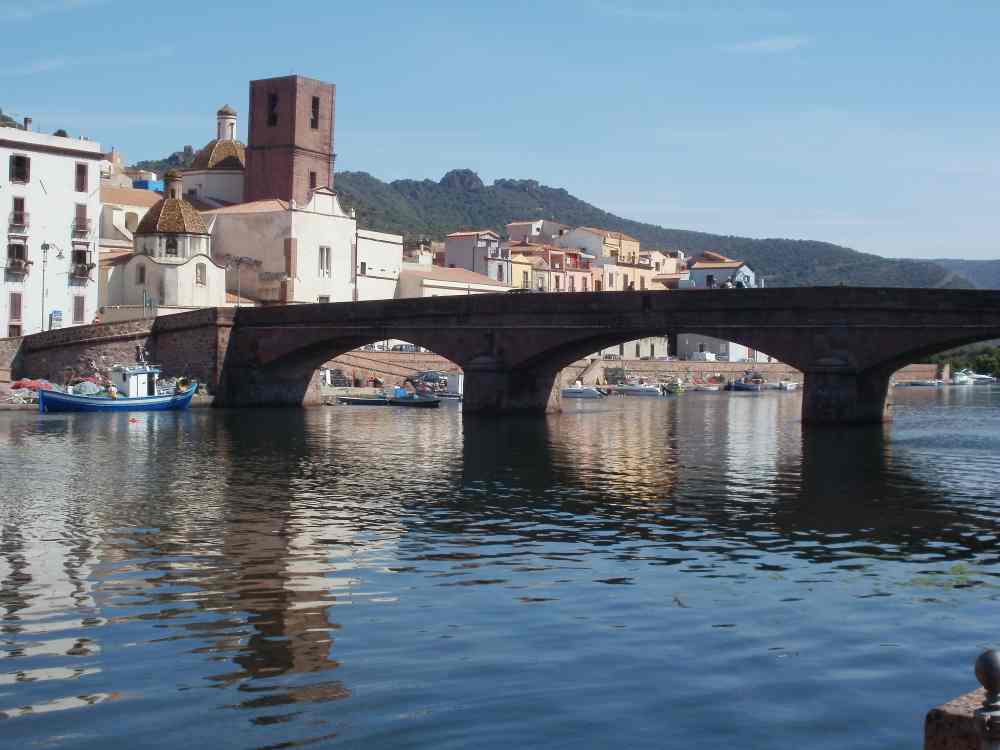
We met
Marco and Alessandra, the charming owners of the building where we were
staying, plus both Marco's parents and their dog, and Marco introduced us to
the local Malvasia (a fortified white wine, peculiar to Sardinia but differing from region to region), which I
quite enjoyed.
It was hard to leave Bosa but we had one more place to stay in Sardinia and that was Alghero. With its colourful history and its Catalan influence, this larger town with its well-fortified harbour and mile upon mile of golden beaches is a popular vacation destination. So its old town area is filled with gift stores, upmarket boutiques, restaurants etc. and its narrow alleyways thronged with visitors. Although we enjoyed walking around there, and especially around the harbour and around the miles of Lungomare (beach promenade) in both directions, we found ourselves more relaxed and comfortable half a mile away in the 'ordinary' and more modern area of town where we were staying.
We appreciated our 'Catalan Apartment' with its big terrace, on the
top floor of the building and the coffee bar below us on the street which had
the most delicious espresso ever (from beans which, so the owner informed me,
cannot be bought in the stores). And we enjoyed making meals from the fresh
fruit and vegetables that we bought in the market and trying out new kinds of
wine, which we drank on the terrace as we watched the sunset.
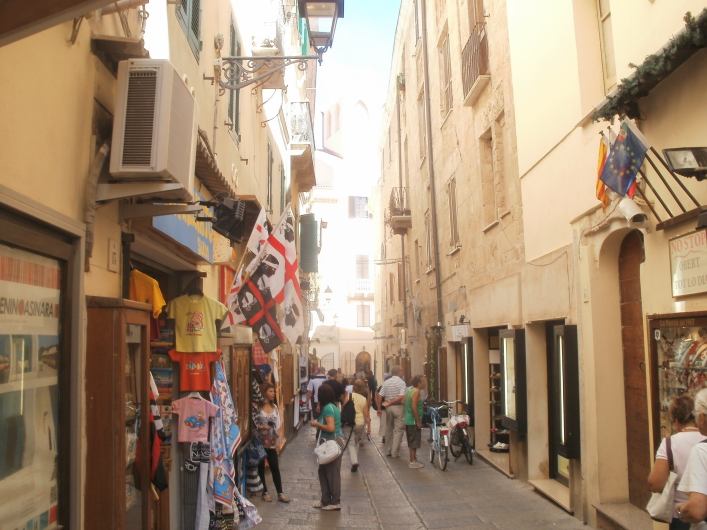
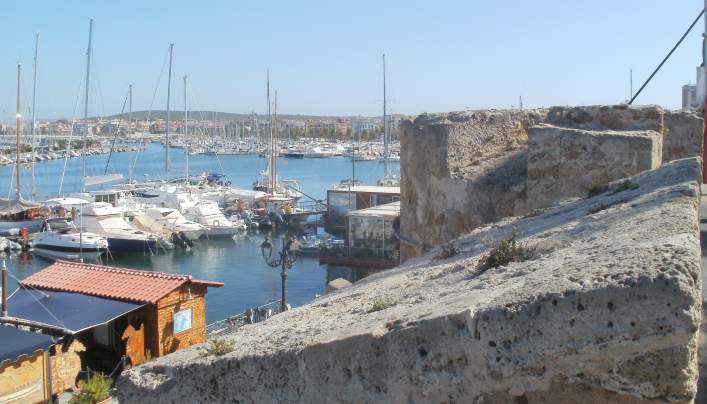
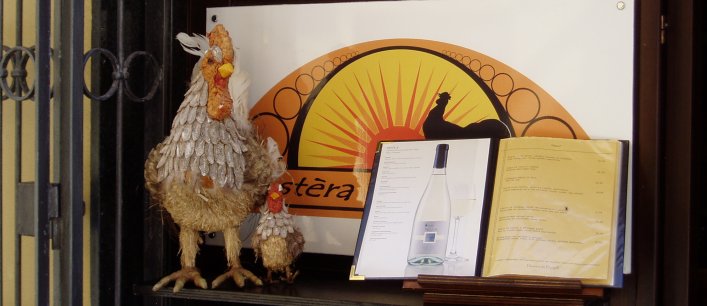
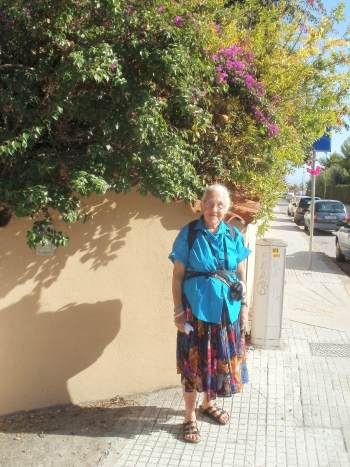
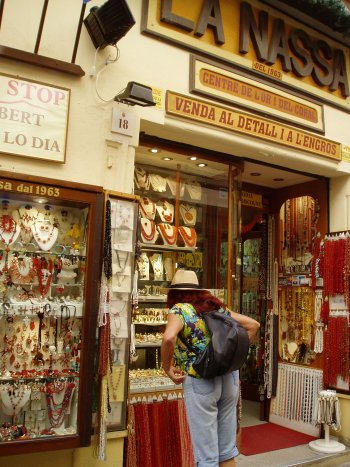
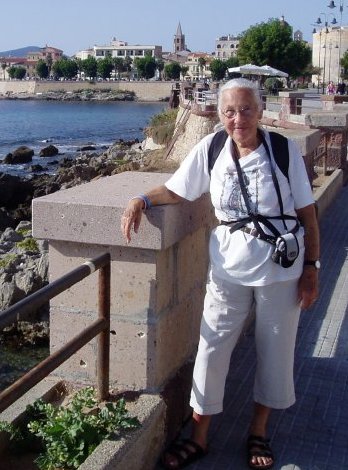
The highlight of our week there, as it probably is for many who visit this area, was a boat trip out to Capo Caccia, the headland at the far end of Alghero's big, curving bay for a tour of Neptune's Grotto. I've visited many caves in my lifetime but this one was one of the most spectacular I've seen.
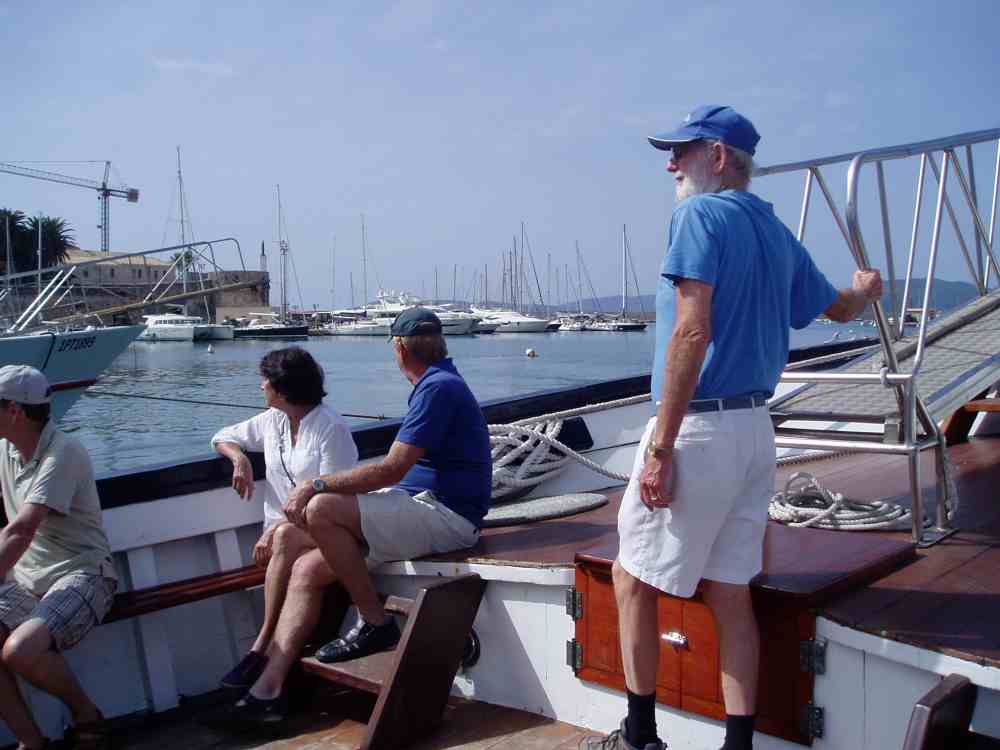
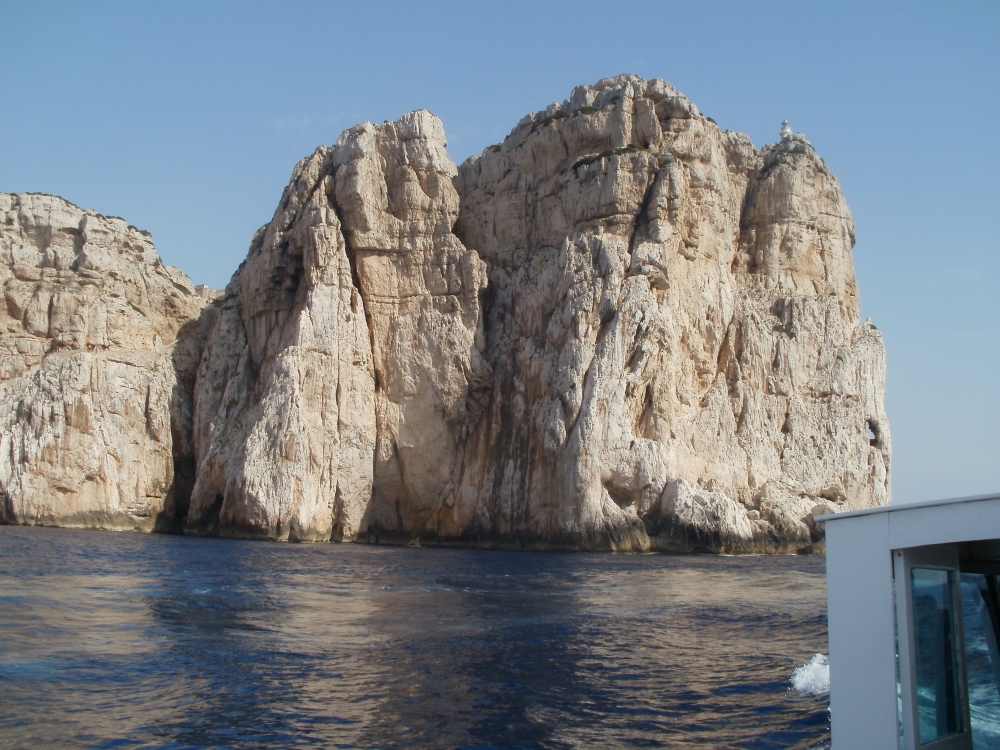
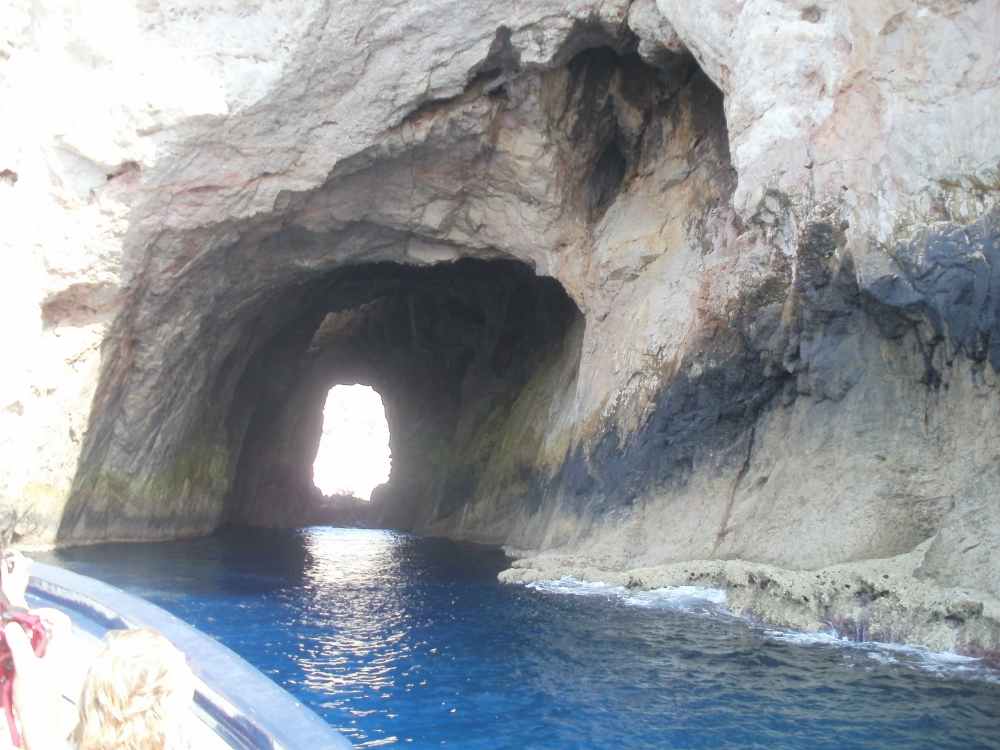
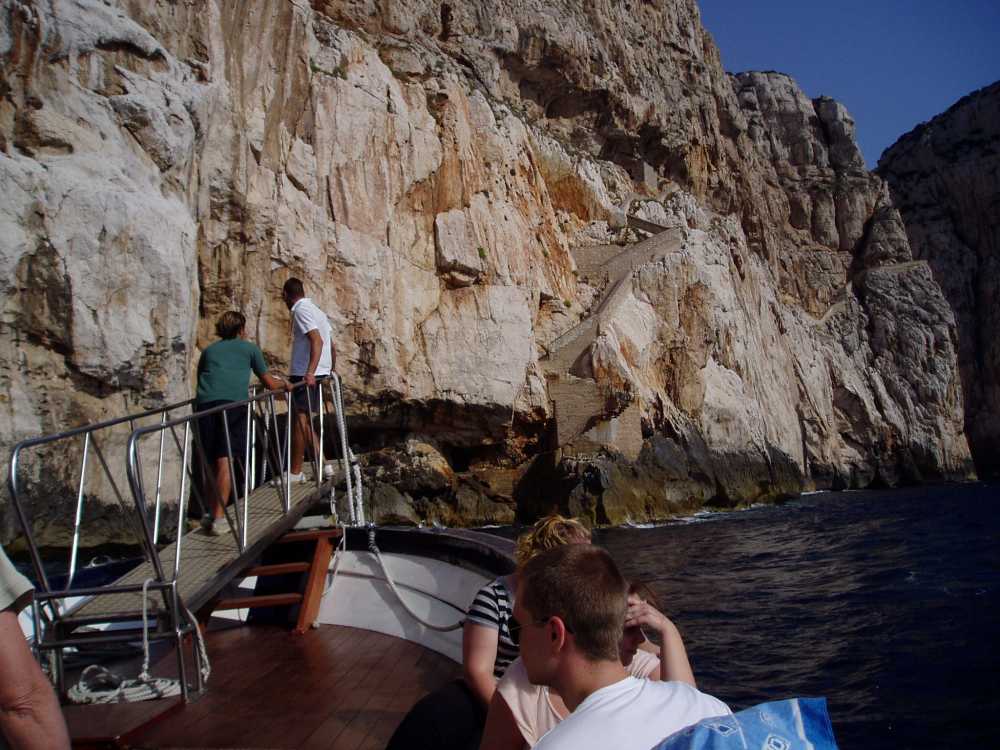
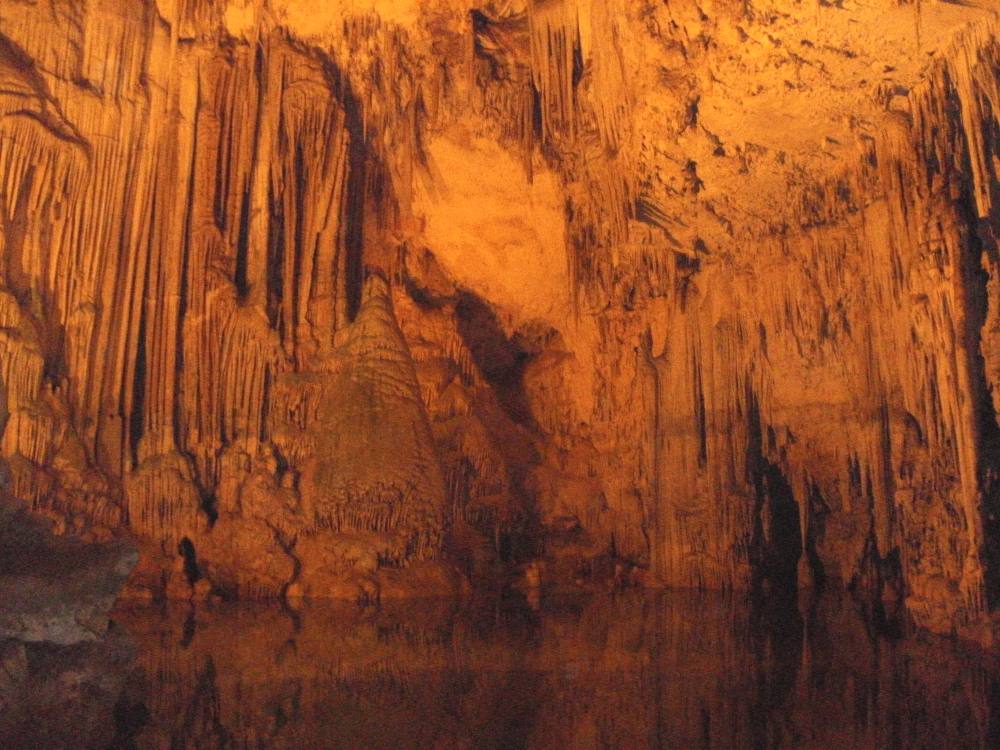
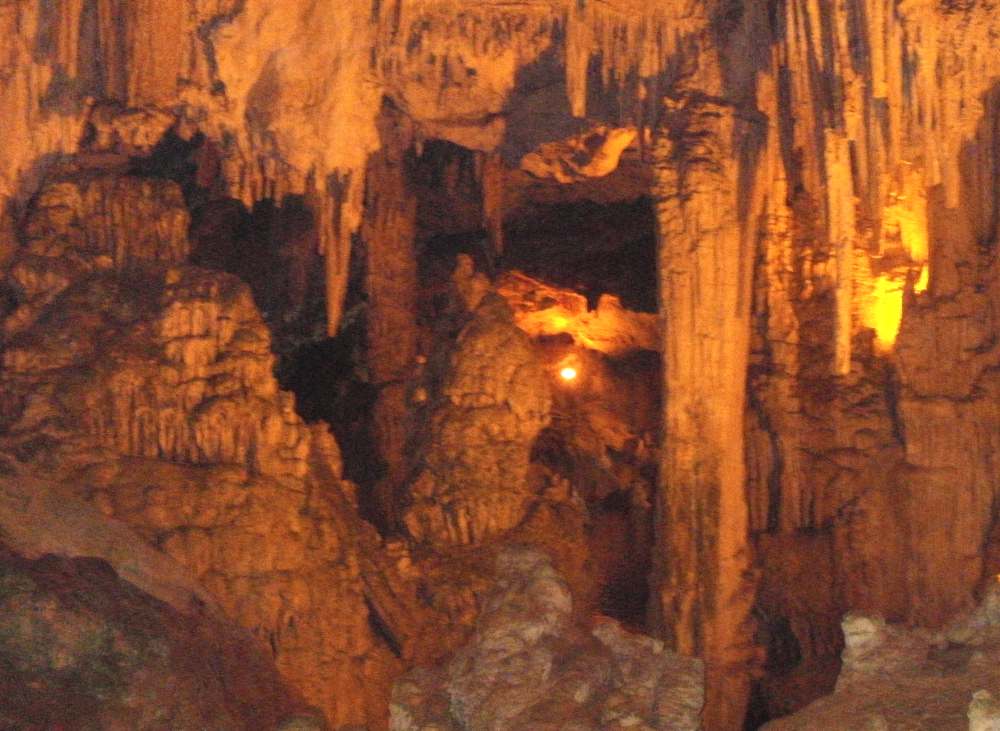
We had chosen to go by boat rather than catching a bus and walking the 654-step staircase down the cliff. We were thinking about how it might be to walk up again!
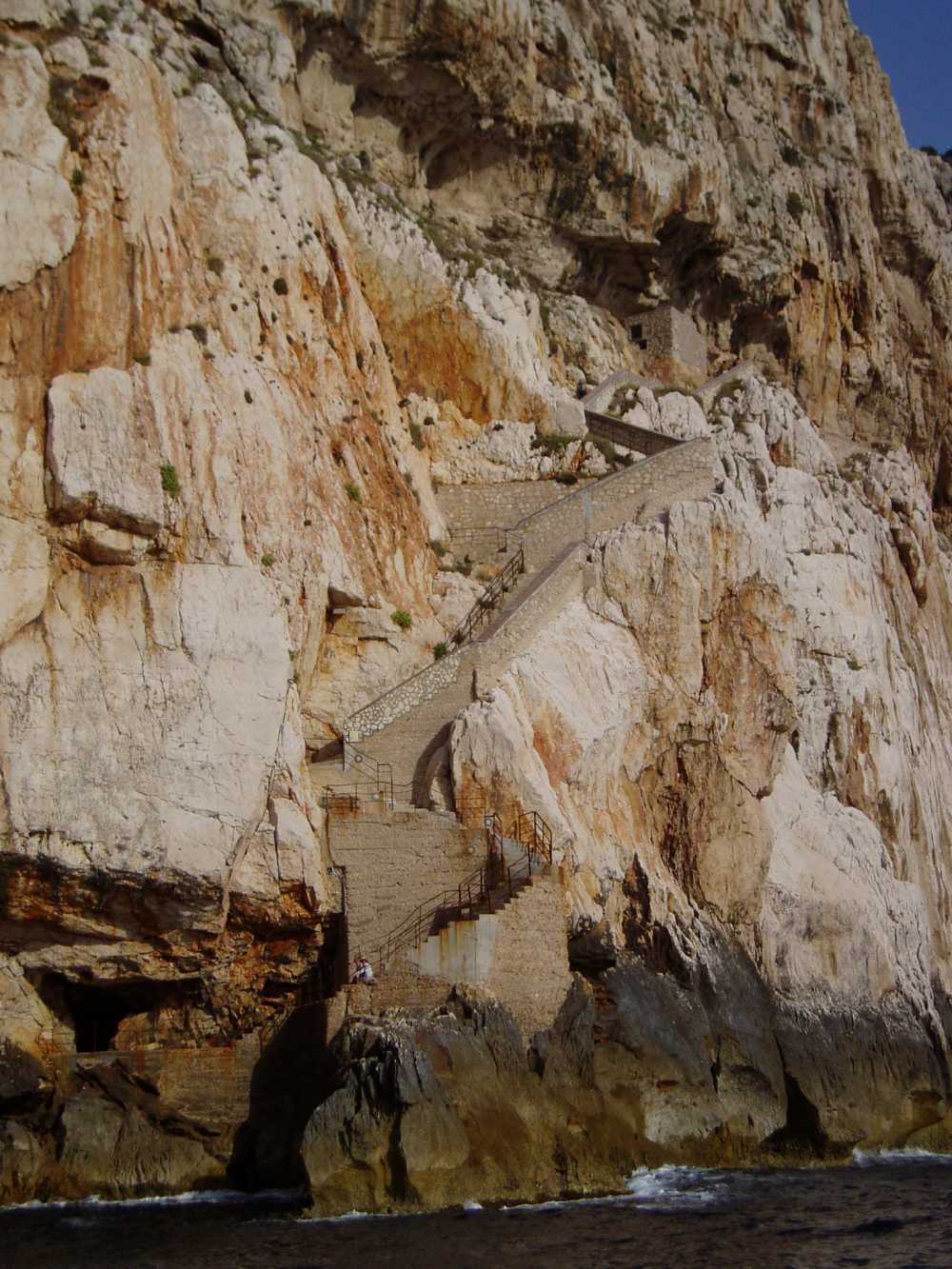
However, the next day, we caught a bus around the bay back to the same area (which is a natural reserve) but this time to hike in the forest there, where we saw deer, and to walk to the very scary edge of some of those amazing limestone cliffs that we had seen from the water.
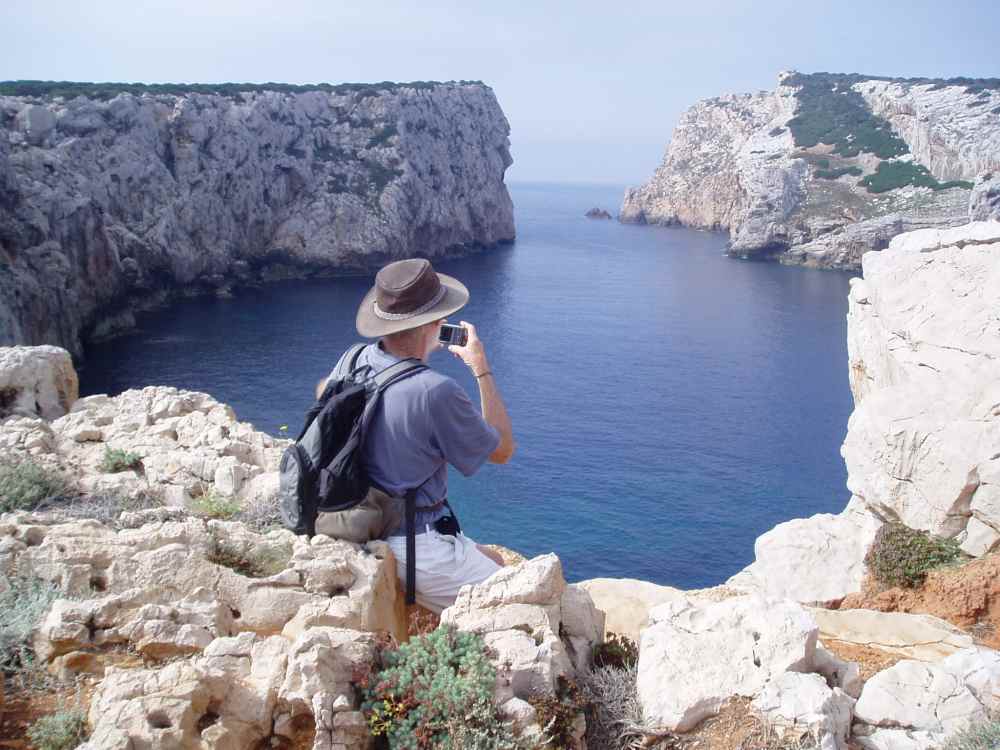
We also took a bus trip up as far as what is reputed to be one of Sardinia's finest beaches, La Pelosa, and walked from there back to the village of Stintino, where we rested our weary feet and ate lunch on a bench by the picturesque harbour.
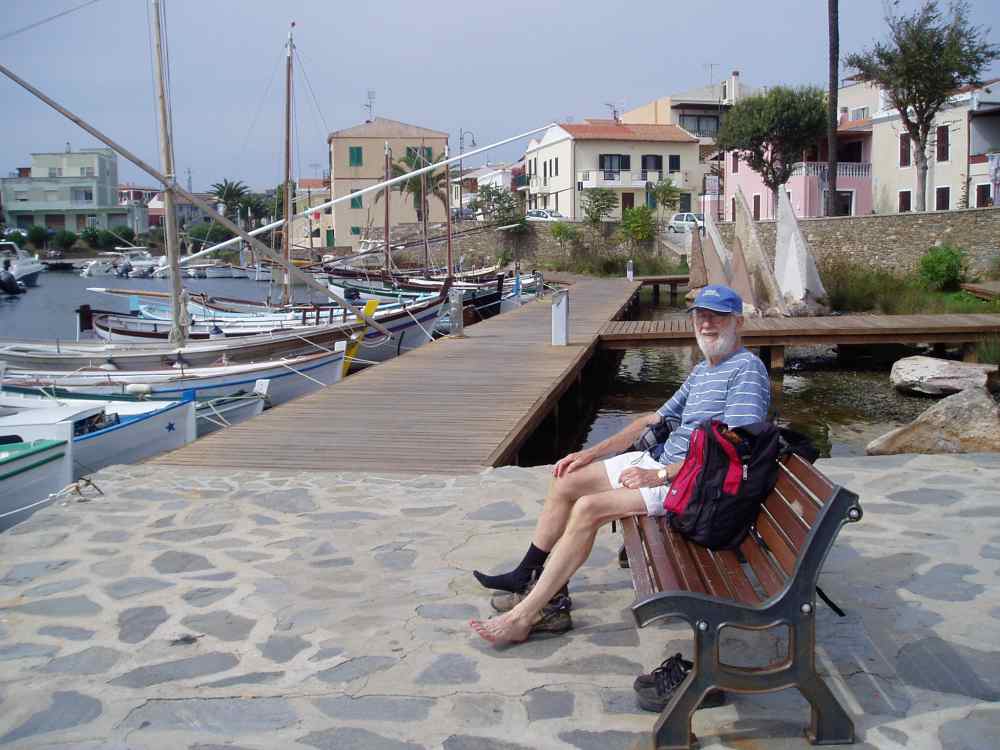
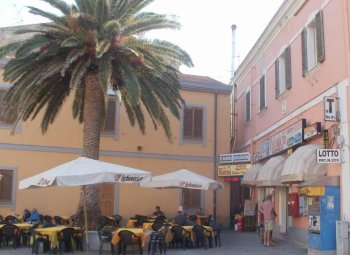
Our vacation was now drawing to a close. Eventually
it was time to catch the last blue bus, this time to Porto Torres, from where
we caught a Tirrenia ferry again, back to Genoa.
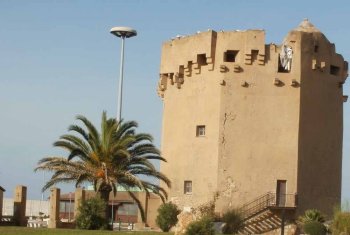
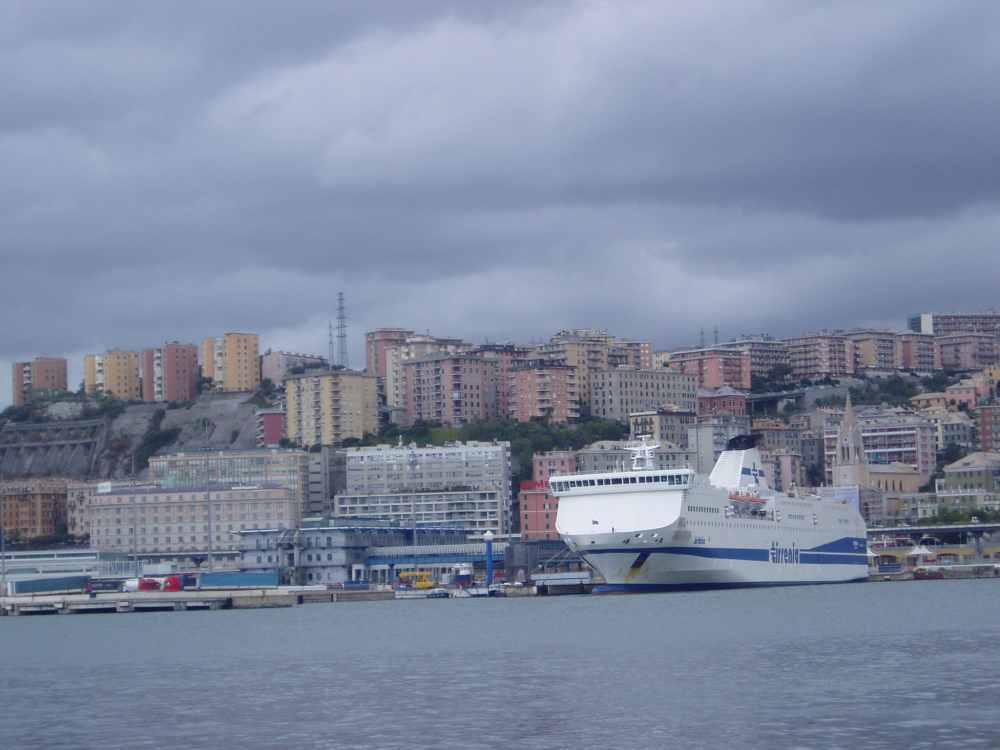
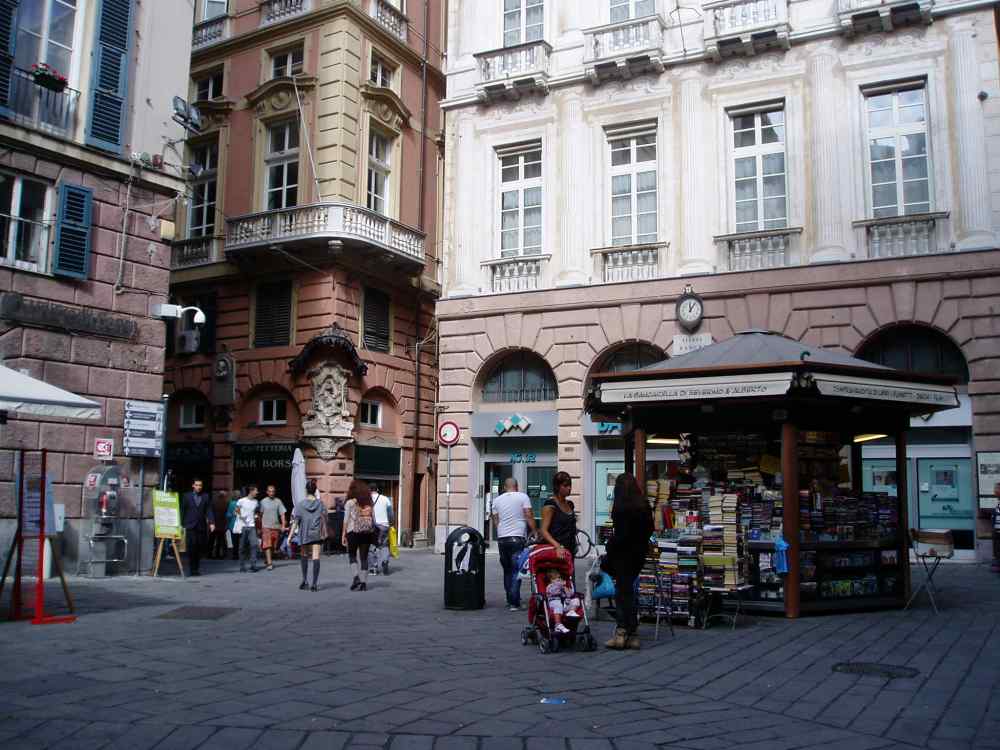
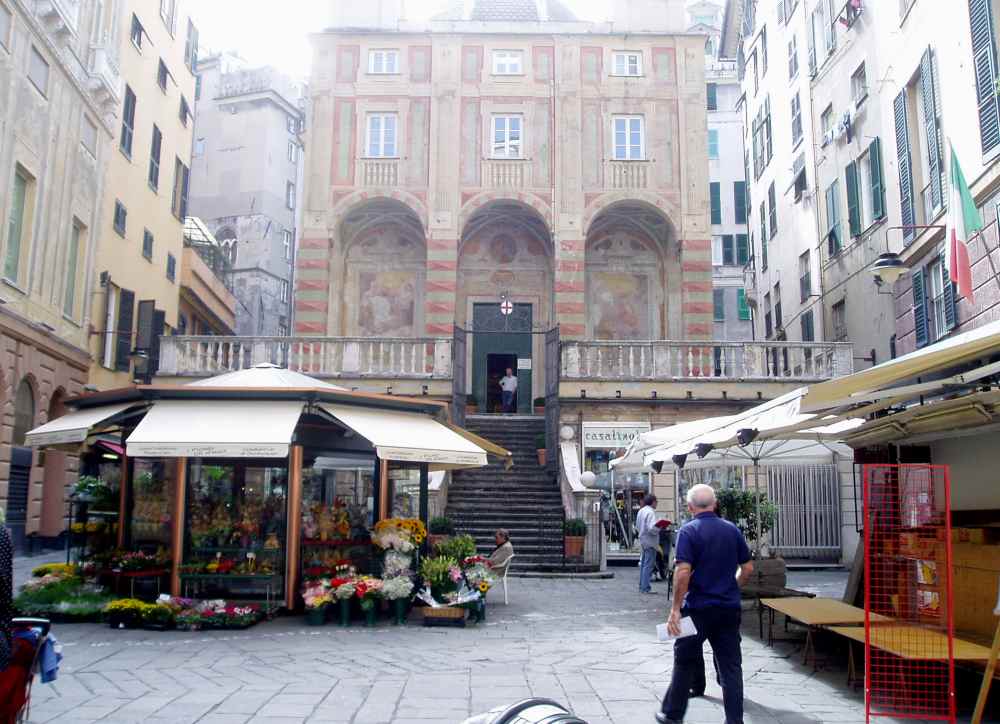
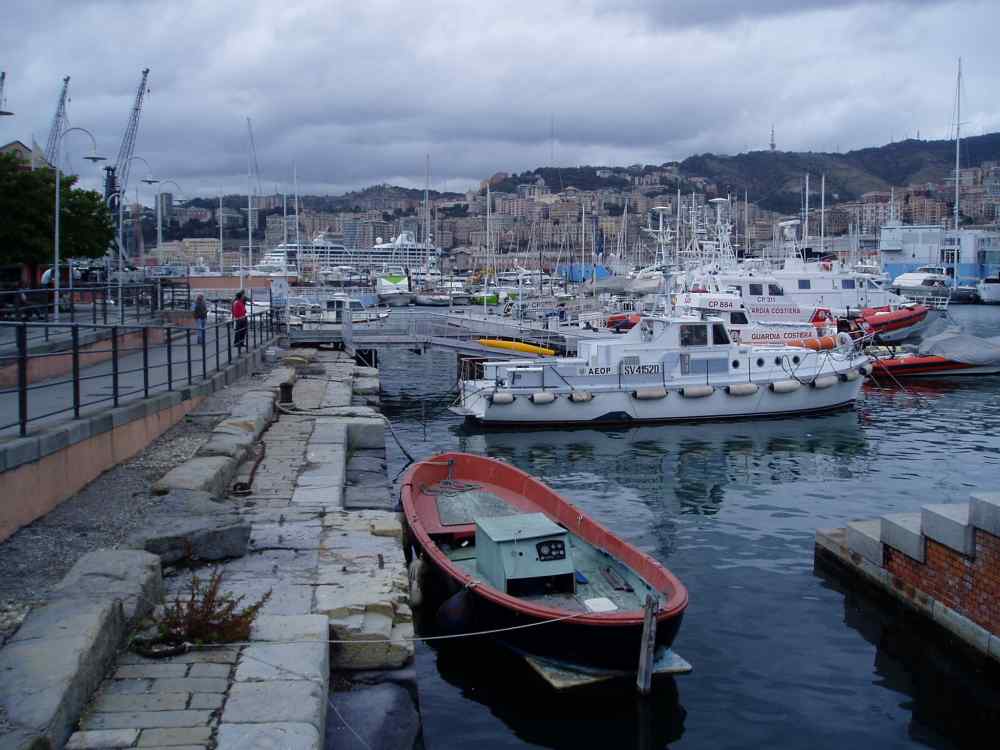
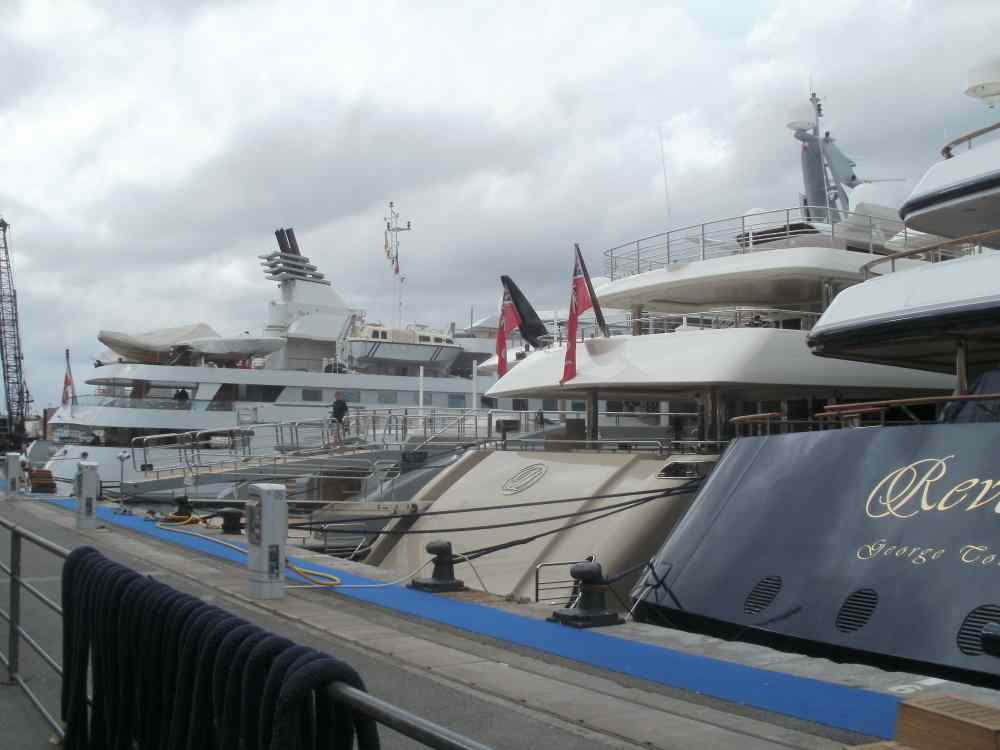
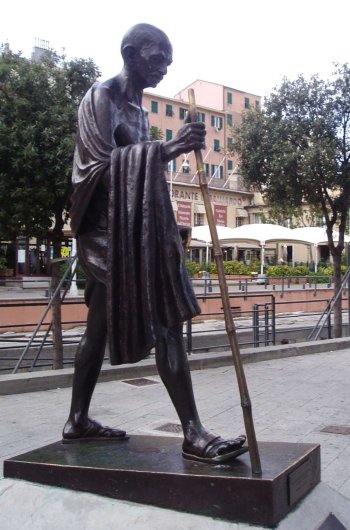
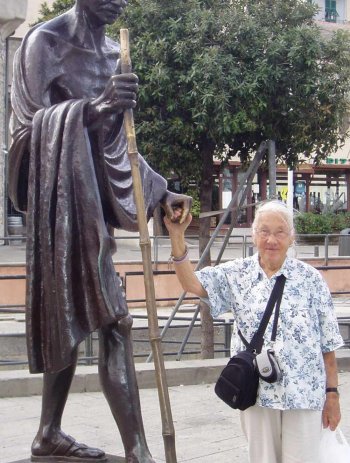
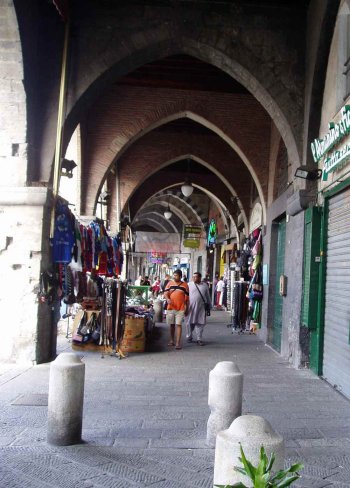
I liked this alleyway, full of shops selling high quality fast food. We bought some to take on the ferry.
We were exhausted by bedtime and had a good trip back to Paris, despite the discomforts of trying to sleep in a narrow bunk in a rattling, swaying train and coping with the less-than-pleasant toilets. And now, here we are, home again, with 800 or so photographs and yet another store of wonderful memories. Our love of Italy, its coasts and mountains, its people, its food and wine and atmosphere seems to deepen with every trip.
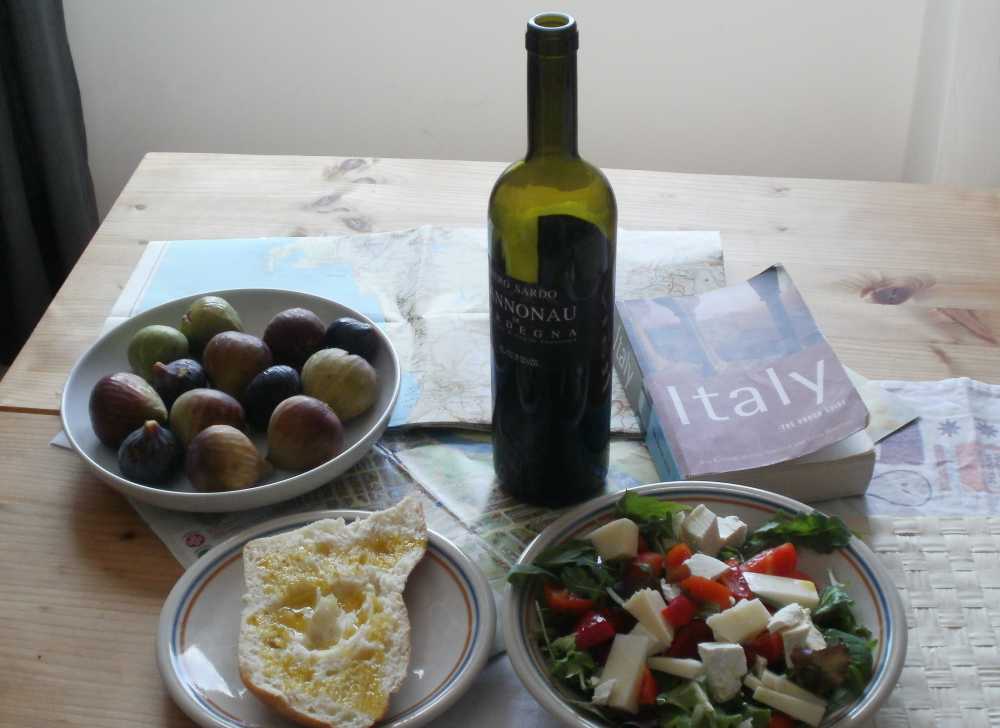
And Sardinia—part of Italy to be sure, but with its very own specialness and charm—seems to have won our hearts. If all goes well, we shall definitely be back.
